

Space Tourism: How Much Does it Cost & Who's Offering It?
Last Updated: December 17, 2022
Many of us dream of going to space and over 600 people have traveled to space as astronauts in government-funded agencies such as NASA, the European Space Agency, and Roscosmos. But how much does spaceflight cost in today and how is that expected to change in the coming years?
With new advancements in spaceflight technology, the costs of space travel are decreasing, making the dream of spaceflight a little closer for us all.
Evolution of Spaceflight Costs and Technologies
During the space race, the cost of sending something into space averaged between $6,000 to over $25,000 per kg of weight not adjusted for inflation and NASA spent $28 billion to land astronauts on the moon, about $288 billion in today’s dollars.
In recent decades, it has averaged around $10,000 per kg though certain missions have been higher due to other factors including the destination, the size of the rocket, the amount of fuel needed, and the cost of fuel.
After the retirement of the space shuttle program, NASA paid Russia to transport astronauts to the ISS at about $80 million per seat on the Soyuz rocket. NASA’s biggest and newest rocket, the SLS (Space Launch System) which is currently being utilized for the new moon missions including Artemis and Orion, currently costs about $2-4 billion per launch.
But recent years and the addition of private space companies have drastically changed the game. NASA allowed private space companies to develop equipment for missions, including a 2006 partnership with SpaceX under the Commercial Orbital Transportation Services (COTS) program to provide resupply for crew and cargo demonstration contracts to the International Space Station (ISS).
This partnership has continued to flourish over the years with SpaceX successfully launching two NASA astronauts in May 2020 on a Crew Dragon Spacecraft, making SpaceX the first private company to send astronauts to the ISS and the first crewed orbital launch from American soil in 9 years.
With the revolutionary technology of reusable boosters from SpaceX, the cost has plummeted, achieving less than $1,600 per kg with the Falcon Heavy (still totaling more than $100 million per launch) and even a projected cost of under a thousand for their next generation model Star Ship.
These recent innovations are even making SLS the more expensive, less efficient option if SpaceX’s projections continue to progress as expected within margins of error. We shall see how NASA plans to adapt goals in light of this.
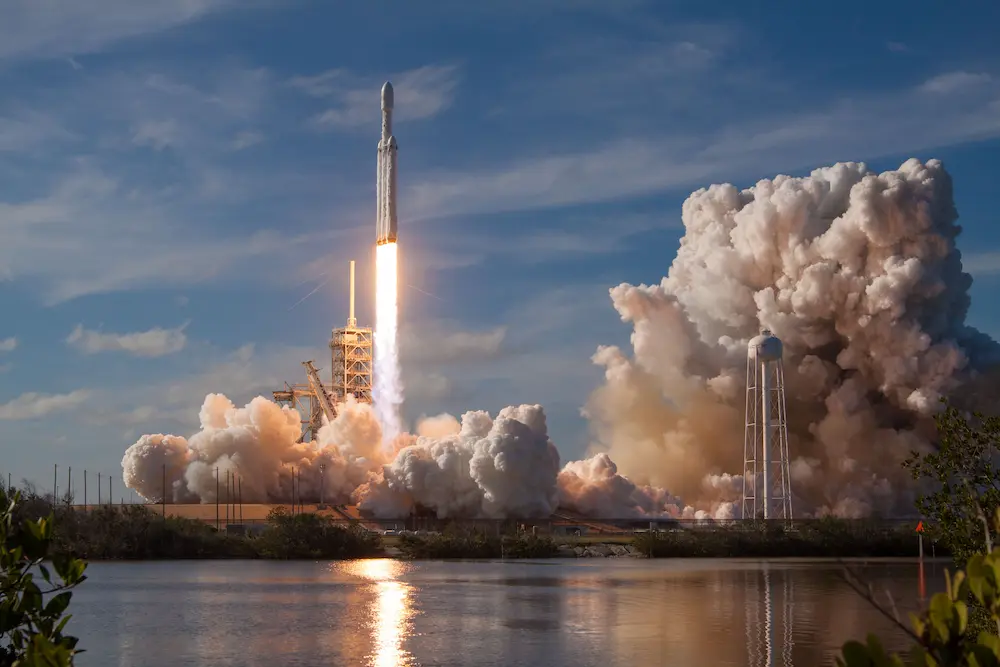
The Falcon Heavy is a cost-effective option for launching payloads into space.
The rise of private space companies
With private space companies, the opportunity for civilians to book a trip to space similar to booking a flight came closer to reality. Dennis Tito was the first private citizen to pay for a trip to space with a trip to the ISS from April 28th to May 6th, 2001 for $20 million dollars. Tito purchased his experience through Space Adventures Inc. which was founded in 1998 and offers a variety of different space experiences. They even acquired Zero Gravity Corporation, NASA’s provider of Reduced Gravity Training (not in space) for its astronauts, in 2008. They offer similar experiences for private individuals starting at about $8,200 as of this publishing (December 2022).
Space Adventures sent seven other space tourists to the ISS through 2009, but due to a number of factors, Space Adventures had to put their ISS offerings on hold until 2021 when they were able to purchase two Soyuz seats due to NASA moving their contract to SpaceX. Space Adventures sent two people to the ISS via the Roscosmos Soyuz rocket in December 2021 and is working on expanding its offerings.
In addition to Elon Musk’s SpaceX, there are a number of other private space companies getting into the commercial spaceflight/ space tourism market, most notably Richard Branson’s Virgin Galactic and Jeff Bezos’s Blue Origins.
Flight Providers & Rates
What are the current rates for commercial spaceflight tickets? What commercial spaceflight trips have already happened? All prices are per person/ per seat.
SpaceX has had the most experience in sending humans to space thanks to its partnership with NASA and Musk has made it clear that he wants to make space travel an option for the public. To date, SpaceX has offered two commercial spaceflight options and has one big one planned for the future:
- SpaceX completed a Multi-Day Orbital Voyage, the first of their new plan to offer private astronaut experiences through their NASA partnership.
- Estimated $55 million for a 3-day stay inside a modified SpaceX Dragon capsule orbiting the Earth at 357 miles (574 km) with three crewmates, sponsored by billionaire Jared Isaacman to raise money for St Jude’s Children’s Hospital
- Partnership between SpaceX and Houston-based Axiom Space Inc.
- $55 million for a 10-day trip to ISS at 408 km with a weeklong (8-day) stay in the orbital lab.
- Expected to continue in 2023
- Axiom plans to build a stand-alone space station to replace the ISS with the first module expected to launch in 2024.
- Steve Aoki: American DJ and record producer
- Everyday Astronaut Tim Dodd: American science communicator, content creator, photographer, and musician
- Yemi A.D.: Czech choreographer, art director and performer
- Rhiannon Adam: Irish photographer
- Karim Iliya: British photographer and filmmaker
- Brendan Hall: American filmmaker and photographer
- Dev Joshi: Indian television actor
- Choi Seung-hyun (stage name: T.O.P.): South Korean rapper, singer, songwriter, record producer, and actor
- Cost is unknown, likely a minimum of $500 million
2. Blue Origin
Blue Origin: currently offers a 100km 12-minute ride to the Karman Line, the recognized boundary between Earth’s atmosphere and outer space; pricing is still unclear and dependent on a variety of factors
- On July 2021, Jeff and Mark Bezos went into space on the New Shepard rocket with Oliver Daemen (who won the trip through an auction bid of around 28 million) and honored guest Wally Funk (a member of Mercury 13, the private program in which women trained to be astronauts but ultimately never went to space)
- Blue Origin has completed 6 commercial space flights as of this publishing. Some “honorable guests” have been invited free of charge, such as Funk and actor William Shatner (Captain Kirk from the original Star Trek). Some have been sponsored or have received special deals due to their nonprofit status.
- $28 million winning auction bid for the first flight ( $19 million was donated)
- $1 million for a board member of a nonprofit
- About $1.25 for a Dude Perfect comedy group crew member, hosted by MoonDAO in August 2022
3. Virgin Galactic Subortbital Joy Ride
Virgin Galactic Subortbital Joy Ride: $450,000 for a 90-minute ride to suborbital space 50km above sea level
- In July 2021, founder Richard Branson flew to the edge of Earth’s atmosphere with two pilots and three other Virgin Galactic employees as the first test of commercial spaceflight for the company
- Each VSS Unity SpaceShipTwo carries up to four passengers
- Expected flights are currently anticipated to begin in 2023
- Includes training accommodations and amenities; launches from New Mexico
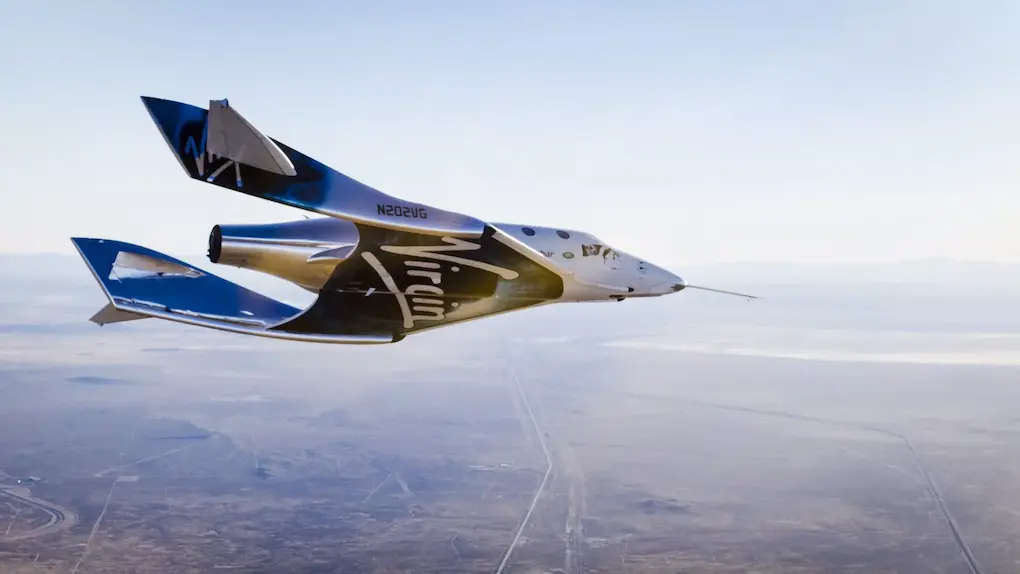
4. Roscosmos/ Space Adventures Customized ISS Trip
Roscosmos/ Space Adventures Customized ISS Trip: $50-60million for a 12-day trip to the ISS at 408 km
- In October 2021 an actress and director shot scenes for the first movie filmed in space
- December 2021 Japanese billionaire Yusaku Maezawa and Yozo Hirano for two days (same billionaire planning to go to the moon with SpaceX)
- With the current situation between Russia and Ukraine, this option is effectively nonexistent currently
5. Space Perspective
Space Perspective: a six-hour balloon ride to space/ the stratosphere on their “Spaceship Neptune” at $125,000
- Rides are currently scheduled to begin by the end of 2024.
- A pressurized capsule will be slowly lifted by a football-field-sized hydrogen-filled balloon 19 miles (30 km) into the stratosphere, about 3 times the altitude of commercial planes.
- The passenger cabin features a bar, bathroom, and windows for sightseeing and is expected to carry 8 passengers and 1 pilot per trip.
6. Aurora Space Station (no longer in development)
Aurora Space Station was supposed to be the world’s first luxury space hotel, offering a 12-day stay for $9.5 million allowing them to free float, observe space and earth, practice hydroponics and play in a hologram deck, but they shut down operations and refunded all deposits in March 2021. They received a lot of media attention and therefore are noted here due to that notoriety.
Conclusion: the current cost of flying to space
Currently, it is only available to those who can spend an average of $250,000 to $500,000 for suborbital trips (about a fifteen-minute ride to the edge of space and back) or flights to actual orbit at more than $50 million per seat (though typically a longer trip than 15 minutes).
It could be free/ discounted if you can find a sponsor, often for nonprofit/ charity purposes, or if you are someone of notoriety that can help spread the company’s mission.
Waitlists are available for most offerings, with a deposit, with many stretching years into the future, which might end up helping you have a spot at a more reasonable price in the future if you can save up.
Many companies are looking to provide extended stay options on private space stations in the future, similar to how you might book a flight somewhere and stay in a hotel for a few days. Again, for the immediate future, this is estimated to cost tens of millions of dollars. The biggest portion of the cost would be launching them, though it is still estimated that a couple million dollars will be needed to cover the expenses of your stay while you are on the space station, whether that is included in the ticket price or added on top of that.
Many companies are hopeful they can eventually price a trip to space down to $100,000 but that will likely take some time, even with the cost-saving measures of reusable boosters. Many forms of recent technology have evolved exponentially in recent years and with dropping price rates as well. Just as plane travel was originally prohibitively expensive, but has now become fairly reasonable for the average consumer, the hope is that the same will eventually happen with space tourism, but we will have to see how long that takes.
While the possibility of going to space is still out of reach for many of us, hopefully, the advancements in recent years and those yet to come will help to continually lower the costs of going to space, just as has occurred in many other fields. This author, for one, truly hopes that the interest of the elite who are currently able to participate in these offerings will spur research and development, not just of space tourism but space exploration in general, to help fuel a quicker journey to space access for all

Written by Sarah Hoffschwelle
Sarah Hoffschwelle is a freelance writer who covers a combination of topics including astronomy, general science and STEM, self-development, art, and societal commentary. In the past, Sarah worked in educational nonprofits providing free-choice learning experiences for audiences ages 2-99. As a lifelong space nerd, she loves sharing the universe with others through her words. She currently writes on Medium at https://medium.com/@sarah-marie and authors self-help and children’s books.
Wow! There's more to read 🚀
This page is part of our collection of articles about astronauts . If you enjoyed the read, then you’ll love the following articles.

How much do astronauts get paid?
The requirements to become an astronaut are extremely rigorous. Does their salary match the difficulty of their profession?
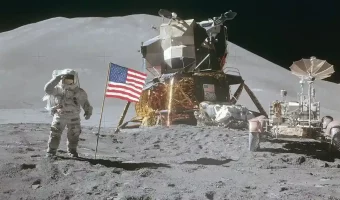
How many flags are on the Moon? The up-to-date list
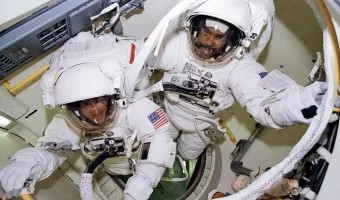
What are the different types of astronauts suit?

How do astronauts train for zero-gravity environments?
Space Tourism: Can A Civilian Go To Space?

2021 has been a busy year for private space tourism: overall, more than 15 civilians took a trip to space during this year. In this article, you will learn more about the space tourism industry, its history, and the companies that are most likely to make you a space tourist.
What is space tourism?
Brief history of space tourism, space tourism companies, orbital and suborbital space flights, how much does it cost for a person to go to space, is space tourism worth it, can i become a space tourist, why is space tourism bad for the environment.
Space tourism is human space travel for recreational or leisure purposes . It’s divided into different types, including orbital, suborbital, and lunar space tourism.
However, there are broader definitions for space tourism. According to the Space Tourism Guide , space tourism is a commercial activity related to space that includes going to space as a tourist, watching a rocket launch, going stargazing, or traveling to a space-focused destination.
The first space tourist was Dennis Tito, an American multimillionaire, who spent nearly eight days onboard the International Space Station in April 2001. This trip cost him $20 million and made Tito the first private citizen who purchased his space ticket. Over the next eight years, six more private citizens followed Tito to the International Space Station to become space tourists.
As space tourism became a real thing, dozens of companies entered this industry hoping to capitalize on renewed public interest in space, including Blue Origin in 2000 and Virgin Galactic in 2004. In the 2000s, space tourists were limited to launches aboard Russian Soyuz aircraft and only could go to the ISS. However, everything changed when the other players started to grow up on the market. There are now a variety of destinations and companies for travels to space.
There are now six major space companies that are arranging or planning to arrange touristic flights to space:
- Virgin Galactic;
- Blue Origin;
- Axiom Space;
- Space Perspective.
While the first two are focused on suborbital flights, Axiom and Boeing are working on orbital missions. SpaceX, in its turn, is prioritizing lunar tourism in the future. For now, Elon Musk’s company has allowed its Crew Dragon spacecraft to be chartered for orbital flights, as it happened with the Inspiration4 3-day mission . Space Perspective is developing a different balloon-based system to carry customers to the stratosphere and is planning to start its commercial flights in 2024.
Orbital and suborbital flights are very different. Taking an orbital flight means staying in orbit; in other words, going around the planet continually at a very high speed to not fall back to the Earth. Such a trip takes several days, even a week or more. A suborbital flight in its turn is more like a space hop — you blast off, make a huge arc, and eventually fall back to the Earth, never making it into orbit. A flight duration, in this case, ranges from 2 to 3 hours.
Here is an example: a spaceflight takes you to an altitude of 100 km above the Earth. To enter into orbit — make an orbital flight — you would have to gain a speed of about 28,000 km per hour (17,400 mph) or more. But to reach the given altitude and fall back to the Earth — make a suborbital flight — you would have to fly at only 6,000 km per hour (3,700 mph). This flight takes less energy, less fuel; therefore, it is less expensive.
- Virgin Galactic: $250,000 for a 2-hour suborbital flight at an altitude of 80 km;
- Blue Origin: approximately $300,000 for 12 minutes suborbital flight at an altitude of 100 km;
- Axiom Space: $55 million for a 10-day orbital flight;
- Space Perspective: $125,000 for a 6-hour flight to the edge of space (32 km above the Earth).
The price depends, but remember that suborbital space flights are always cheaper.
What exactly do you expect from a journey to space? Besides the awesome impressions, here is what you can experience during such a trip:
- Weightlessness . Keep in mind that during a suborbital flight you’ll get only a couple of minutes in weightlessness, but it will be truly fascinating .
- Space sickness . The symptoms include cold sweating, malaise, loss of appetite, nausea, fatigue, and vomiting. Even experienced astronauts are not immune from it!
- G-force . 1G is the acceleration we feel due to the force of gravity; a usual g-force astronauts experience during a rocket launch is around 3gs. To understand how a g-force influences people , watch this video.
For now, the most significant barrier for space tourism is price. But air travel was also once expensive; a one-way ticket cost more than half the price of a new car . Most likely, the price for space travel will reduce overtime as well. For now, you need to be either quite wealthy or win in a competition, as did Sian Proctor, a member of Inspiration4 mission . But before spending thousands of dollars on space travel, here is one more fact you might want to consider.
Rocket launches are harmful to the environment in general. During the burning of rocket fuels, rocket engines release harmful gases and soot particles (also known as black carbon) into the upper atmosphere, resulting in ozone depletion. Think about this: in 2018 black-carbon-producing rockets emitted about the same amount of black carbon as the global aviation industry emits annually.
However, not all space companies use black carbon for fuel. Blue Origin’s New Shepard rocket has a liquid hydrogen-fuelled engine: hydrogen doesn’t emit carbon but simply turns into water vapor when burning.
The main reason why space tourism could be harmful to the environment is its potential popularity. With the rising amount of rocket launches the carbon footprint will only increase — Virgin Galactic alone aims to launch 400 of these flights annually. Meanwhile, the soot released by 1,000 space tourism flights could warm Antarctica by nearly 1°C !
Would you want to become a space tourist? Let us know your opinion on social media and share the article with your friends, if you enjoyed it! Also, the Best Mobile App Awards 2021 is going on right now, and we would very much appreciate it if you would vote for our Sky Tonight app . Simply tap "Vote for this app" in the upper part of the screen. No registration is required!
- Share full article
Advertisement
How much does a ticket to space on New Shepard cost? Blue Origin isn’t saying.

By Joey Roulette
- Oct. 13, 2021
Blue Origin has declined to publicly state a price for a ticket to fly on New Shepard. The company is nearing $100 million in sales so far, Mr. Bezos has said. But it’s unclear how many ticket holders that includes.
“We don’t know quite yet” when Blue Origin will publicly announce a price, Mr. Bezos told reporters in July after his flight to space. “Right now we’re doing really well with private sales.”
Oliver Daemen, the Dutch teenager aboard Blue Origin’s first crewed flight in July, was occupying a seat that the company auctioned off for $28 million, a steep number that even shocked some company executives. Of that total, $19 million was donated equally to 19 space organizations.
Mr. Daemen, 18, wasn’t the winning bidder. His father, a private equity executive, was the runner-up in the auction and was next in line after the actual winner. That individual, who has not been named, plunked down $28 million before postponing their trip over a scheduling conflict, Blue Origin said at the time.
Tickets to the edge of space on Virgin Galactic’s SpaceShipTwo were hiked to $450,000 in August, from $250,000, when the company reopened ticket sales after a yearslong hiatus.
Flights to orbit — a much higher altitude than Blue Origin or Virgin Galactic’s trips go — are far more expensive. Three passengers to the International Space Station next year are paying $55 million each for their seats on a SpaceX rocket, bought through the company Axiom Space.
Many wealthy customers and space company executives see the steep ticket prices as early investments into the nascent space tourism industry, hoping the money they put down can help lower the cost of launching rockets.
What’s Up in Space and Astronomy
Keep track of things going on in our solar system and all around the universe..
Never miss an eclipse, a meteor shower, a rocket launch or any other 2024 event that’s out of this world with our space and astronomy calendar .
Scientists may have discovered a major flaw in their understanding of dark energy, a mysterious cosmic force . That could be good news for the fate of the universe.
A new set of computer simulations, which take into account the effects of stars moving past our solar system, has effectively made it harder to predict Earth’s future and reconstruct its past.
Dante Lauretta, the planetary scientist who led the OSIRIS-REx mission to retrieve a handful of space dust , discusses his next final frontier.
A nova named T Coronae Borealis lit up the night about 80 years ago. Astronomers say it’s expected to put on another show in the coming months.
Is Pluto a planet? And what is a planet, anyway? Test your knowledge here .
Things you buy through our links may earn Vox Media a commission.
When Can I Buy a Ticket to Space? A Guide for Non-Billionaires.

We’re at the dawn of a new era for space exploration, with thrill-seeking civilians boldly going where no tourist has gone before. Over 60 years after Soviet cosmonaut Yuri Gagarin became the first person in space, a handful of companies are planning to take non-astronauts with sufficiently massive bank accounts on a galactic tour: Tesla Founder Elon Musk’s SpaceX, Amazon CEO Jeff Bezos’s Blue Origin , and Richard Branson’s Virgin Galactic.
Here’s everything you need to know about the rise of space tourism, from which billionaires are leaving Earth imminently to when the rest of us might be able to join them.
What’s the history of civilian space travel?
The initial effort to send a civilian into space ended in disaster: In 1986, Christa McAuliffe was set to be the first civilian and teacher in space, but she and six crewmates were tragically killed during the explosion of Space Shuttle Challenger.
After that, NASA largely forbade the practice. But Russia’s then-struggling space program stepped up to the plate. On April 28, 2001, Dennis Tito paid a whopping $20 million for a seat on a Russian Soyuz rocket, becoming the first civilian to visit the International Space Station – humanity’s home away from home. According to Space.com , just seven space tourists have followed in his footsteps in the last 20 years, via Russia’s Space Agency. But the year ahead should be a busy one for the nascent industry, with more and more civilians reaching for the stars.
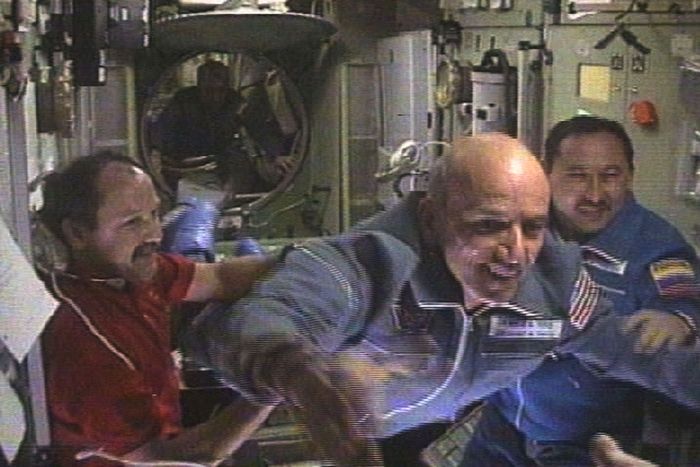
Who’s heading to space next?
The competition between the major players in the billionaire space race heated up when Bezos announced that he would jet off to the brink of space and back on July 20, the anniversary of the Apollo 11 moon landing. On July 1 – just hours after Bezos announced that in addition to his brother, he’d be joined on the flight by aviation pioneer Wally Funk – Richard Branson revealed that he would beat the Amazon founder into space by nine days. Branson will blast off on Virgin Galactic’s VSS Unity rocketplane on July 11.
Elon Musk’s SpaceX is planning what it’s billing as “the world’s first all-civilian space flight” in late 2021. The multiday flight into low Earth orbit, dubbed “Inspiration4” and funded by billionaire entrepreneur Jared Isaacman, aims to raise awareness for St. Jude Children’s Research Hospital and begin “a new era for human spaceflight and exploration.” The crew includes Isaacman, childhood cancer survivor Hayley Arceneaux, plus two others. It’s currently scheduled to launch “no earlier than September 15, 2021,” per the mission’s website.
SpaceX aims to keep the momentum going by partnering with Houston-based Axiom Space to send more everyday people into space using its Crew Dragon spacecraft, this time going to the International Space Station. Axiom’s first private ISS mission is set to launch “no earlier than January 2022.” Its second mission is the focus of the Discovery Channel reality-TV show Who Wants to Be an Astronaut? , in which contestants take on extreme challenges for a chance at a ticket to the ISS. Axiom Space plans to eventually host civilian space station jaunts every six months.
What does this cost?
Unsurprisingly, going to space comes with a hefty price tag. Axiom passengers will pay the low, low price of $55 million for the flight and a stay on the ISS. Meanwhile, Virgin Galactic’s suborbital trips — where passengers can experience weightlessness for several minutes before falling back to Earth — are far more reasonable in cost, at $250,000 . Six hundred people have already made reservations for 90-minute flights on Branson’s SpaceShipTwo, Reuters reports. And while Bezos’s Blue Origin hasn’t announced official prices, an auction for a seat to join him and his brother on his brief sojourn to space in July went for a cool $28 million .
How safe is it?
Hollywood isn’t exaggerating: Going to space is inherently dangerous. Congress agreed in 2004 to largely let the space-tourism industry self-regulate, so there are few laws and restrictions on taking civilians into space.
“One way that the government could have gone was to say, ‘Hey, we’re going to certify the spacecraft, make sure that they’re safe and give them the stamp of approval,’” Mark Sundahl, an expert at space law at Cleveland State University, told Discover magazine . “But they didn’t go that way. Instead, they said ‘We’re going to prove we’re protecting space tourists by just requiring the companies to tell them that they may die, and then it’s up to them to make a decision if they want to take that risk or not.’ That’s the approach that the government took, and it is somewhat controversial.”
What other types of space tourism are in the works?
Strapping in on a rocket and blasting off into space isn’t the only type of travel available for those eager to leave this planet. Human space flight company Space Perspective is planning to fly passengers to the edge of space in a high-tech version of a hot-air balloon, “the size of a football stadium,” lifted by hydrogen. Flights are planned for early 2024, with tickets priced firmly at $125,000 per person.
For another out-of-this-world vacation, check out the company Orbital Assembly Corporation , which plans to open a luxury space hotel in 2027. The hotel, named Voyager Station, looks almost like a Ferris wheel floating in orbit and features a restaurant, gym, and Earth-viewing lounges and bars. A three-and-a-half-day stay is expected to cost up to $5 million, the Washington Post reports.
Are other celebrities planning to explore space?
A slew of stars have already bought their tickets to space with Virgin Galactic, among them Justin Bieber, Ashton Kusher, and Leonardo DiCaprio, according to the New York Daily News . Last year, Actor Tom Cruise and NASA announced their own collaboration to make a movie on the International Space Station.
When can the average person do this?
Once again, the biggest barrier to space is the price tag. But air travel was also once prohibitively expensive, with a one-way ticket across the country costing more than half the price of a new car ; one can expect similar price reductions in space travel. For now, partaking in a sweepstakes or reality show might be the best bet for those with tiny bank accounts and big dreams of taking to the stars.
This post was updated after Branson announced he would head to space on July 11.
- space tourism
- richard branson
- blue origin
- virgin galactic
Most Viewed Stories
- Man Who Self-Immolated Near Trump Trial Identified: Live Updates
- Lara Trump Threatens ‘Four Years of Scorched Earth’ If Trump Retakes Power
- How Product Recommendations Broke Google
- Andrew Huberman’s Mechanisms of Control
- Conservatives Suddenly Realize Tucker Carlson Is a Lying Russia Dupe
- A Handgun for Christmas
Editor’s Picks

Most Popular
- Man Who Self-Immolated Near Trump Trial Identified: Live Updates By Intelligencer Staff
- Lara Trump Threatens ‘Four Years of Scorched Earth’ If Trump Retakes Power By Jonathan Chait
- How Product Recommendations Broke Google By John Herrman
- Andrew Huberman’s Mechanisms of Control By Kerry Howley
- Conservatives Suddenly Realize Tucker Carlson Is a Lying Russia Dupe By Jonathan Chait
- A Handgun for Christmas By Lisa Miller

What is your email?
This email will be used to sign into all New York sites. By submitting your email, you agree to our Terms and Privacy Policy and to receive email correspondence from us.
Sign In To Continue Reading
Create your free account.
Password must be at least 8 characters and contain:
- Lower case letters (a-z)
- Upper case letters (A-Z)
- Numbers (0-9)
- Special Characters (!@#$%^&*)
As part of your account, you’ll receive occasional updates and offers from New York , which you can opt out of anytime.

Space tourism – 20 years in the making – is finally ready for launch
Professor of Strategy and Security Studies, Air University
Disclosure statement
Wendy Whitman Cobb is affiliated with the US Air Force School of Advanced Air and Space Studies. Her views are her own and do not necessarily reflect the views of the Department of Defense or any of its affiliates.
View all partners
For most people, getting to the stars is nothing more than a dream. On April 28, 2001, Dennis Tito achieved that lifelong goal – but he wasn’t a typical astronaut. Tito, a wealthy businessman, paid US$20 million for a seat on a Russian Soyuz spacecraft to be the first tourist to visit the International Space Station. Only seven people have followed suit in the 20 years since, but that number is poised to double in the next 12 months alone.
NASA has long been hesitant to play host to space tourists , so Russia – looking for sources of money post-Cold War in the 1990s and 2000s – has been the only option available for those looking for this kind of extreme adventure. However, it seems the rise of private space companies is going to make it easier for regular people to experience space.
From my perspective as a space policy analyst , I see the beginning of an era in which more people can experience space. With companies like SpaceX and Blue Origin hoping to build a future for humanity in space, space tourism is a way to demonstrate both the safety and reliability of space travel to the general public.
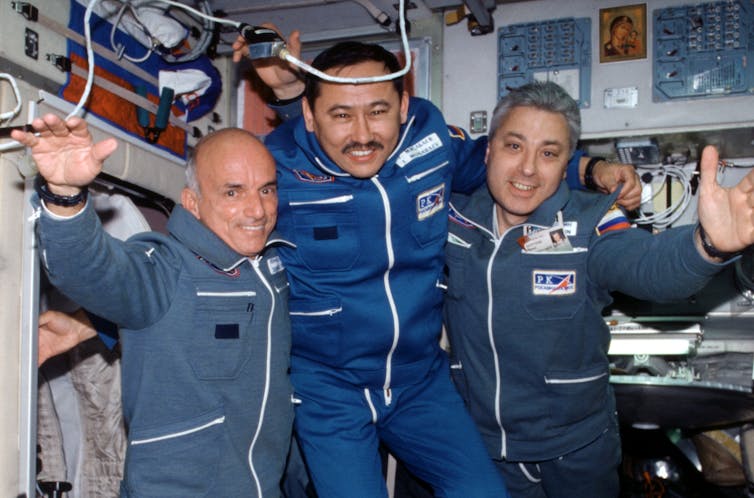
The development of space tourism
Flights to space like Dennis Tito’s are expensive for a reason. A rocket must burn a lot of costly fuel to travel high and fast enough to enter Earth’s orbit.
Another cheaper possibility is a suborbital launch, with the rocket going high enough to reach the edge of space and coming right back down. While passengers on a suborbital trip experience weightlessness and incredible views, these launches are more accessible.
The difficulty and expense of either option has meant that, traditionally, only nation-states have been able to explore space. This began to change in the 1990s as a series of entrepreneurs entered the space arena. Three companies led by billionaire CEOs have emerged as the major players: Virgin Galactic, Blue Origin and SpaceX. Though none have taken paying, private customers to space, all anticipate doing so in the very near future.
British billionaire Richard Branson has built his brand on not just business but also his love of adventure. In pursuing space tourism, Branson has brought both of those to bear. He established Virgin Galactic after buying SpaceShipOne - a company that won the Ansari X-Prize by building the first reusable spaceship. Since then, Virgin Galactic has sought to design, build and fly a larger SpaceShipTwo that can carry up to six passengers in a suborbital flight.
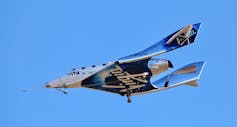
The going has been harder than anticipated. While Branson predicted opening the business to tourists in 2009, Virgin Galactic has encountered some significant hurdles – including the death of a pilot in a crash in 2014 . After the crash, engineers found significant problems with the design of the vehicle, which required modifications.
Elon Musk and Jeff Bezos, respective leaders of SpaceX and Blue Origin, began their own ventures in the early 2000s.
Musk, fearing that a catastrophe of some sort could leave Earth uninhabitable, was frustrated at the lack of progress in making humanity a multiplanetary species. He founded SpaceX in 2002 with the goal of first developing reusable launch technology to decrease the cost of getting to space. Since then, SpaceX has found success with its Falcon 9 rocket and Dragon spacecraft. SpaceX’s ultimate goal is human settlement of Mars – sending paying customers to space is an intermediate step. Musk says he hopes to show that space travel can be done easily and that tourism might provide a revenue stream to support development of the larger, Mars-focused Starship system.
Bezos, inspired by the vision of physicist Gerard O’Neill , wants to expand humanity and industry not to Mars, but to space itself. Blue Origin , established in 2004, has proceeded slowly and quietly in also developing reusable rockets. Its New Shepard rocket, first successfully flown in 2015, will eventually offer tourists a suborbital trip to the edge of space, similar to Virgin Galactic’s. For Bezos, these launches represent an effort at making space travel routine, reliable and accessible to people as a first step to enabling further space exploration.
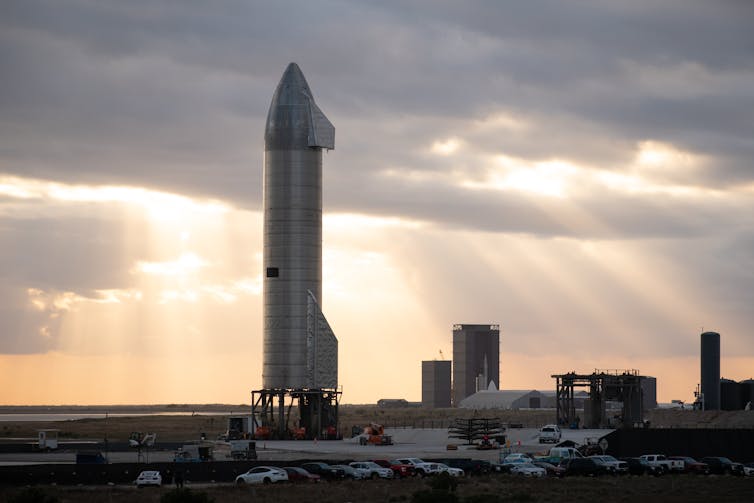
Outlook for the future
Now, SpaceX is the only option for someone looking to go into space and orbit the Earth. It currently has two tourist launches planned. The first is scheduled for as early as September 2021 , funded by billionaire businessman Jared Isaacman. The other trip, planned for 2022, is being organized by Axiom Space . These trips will be costly , at $55 million for the flight and a stay on the International Space Station. The high cost has led some to warn that space tourism – and private access to space more broadly – might reinforce inequality between rich and poor.
Blue Origin’s and Virgin Galactic’s suborbital trips are far more reasonable in cost, with both priced between $200,000 and $250,000 . Blue Origin appears to be the nearest to allowing paying customers on board, saying after a recent launch that crewed missions would be happening “soon.” Virgin Galactic continues to test SpaceShipTwo, but no specific timetable has been announced for tourist flights.
Though these prices are high, it is worth considering that Dennis Tito’s $20 million ticket in 2001 could pay for 100 flights on Blue Origin soon. The experience of viewing the Earth from space, though, may prove to be priceless for a whole new generation of space explorers.
[ Over 104,000 readers rely on The Conversation’s newsletter to understand the world. Sign up today .]
An updated version of this article was published on May 7, 2021. Read it here .
- Space tourism
- International Space Station (ISS)
- Virgin Galactic
- Space industry
- Blue Origin
- Private spaceflight

Sydney Horizon Educators (Identified)

Senior Disability Services Advisor

Deputy Social Media Producer

Associate Professor, Occupational Therapy

GRAINS RESEARCH AND DEVELOPMENT CORPORATION CHAIRPERSON
What will space tourists get when they fly with SpaceX, Blue Origin, and Virgin Galactic? Spacesuits, sleeping bags ... and Jeff Bezos
- Virgin Galactic's $250,000 ticket to the edge of space includes a spacesuit.
- Passengers paying $55 million for SpaceX's mission to the ISS get sleeping bags, hygiene products.
- Blue Origin's $28 million spaceflight comes with a seat next to Jeff Bezos.
- See more stories on Insider's business page .

The era of space tourism has dawned.
Richard Branson is scheduled to blast off in Virgin Galactic's VSS Unity on Sunday for the company's first fully-crewed rocket-powered test flight .
If the launch goes ahead as planned, he'll be 9 days ahead of Amazon founder Jeff Bezos, who plans to travel to the edge of space on July 20 in Blue Origin's New Shepard spacecraft.
Meanwhile, SpaceX's private mission with Axiom Space is scheduled to fly four passengers to the International Space Station (ISS) in early 2022.
Read more: As Jeff Bezos and Richard Branson blast off, here are 11 of the most exciting space startups according to VCs
The journeys certainly aren't cheap. Trips aboard Virgin Galactic's VSS Unity will cost passengers $250,000 apiece. A seat on Blue Origin's New Shepard craft was auctioned off at $28 million in June. And the four passengers traveling to the ISS on SpaceX's Crew Dragon will pay a cool $55 million a head.
The question is, what bang will they get for their buck?
SpaceX and Axiom
A ticket for Axiom's mission to the ISS will include:
- Mission planning
- Life support
- Medical support
- Crew provisions
- Eight days aboard the ISS
Staying on the ISS costs the astronauts about $6.8 million a day, NASA told The Verge in January.
Related stories
According to NASA's 2021 price list , it should cost $2,000 per crew member per day for food and drinks aboard the ISS. It'll also cost each person as much as $1,500 per day for things like clothing, hygiene products, office supplies, and sleeping bags.
Blue Origin
The unnamed winner of Blue Origin's auction will accompany Jeff Bezos and his brother on an 11-minute trip on the New Shepard craft. For their $28 million they will be getting:
- On-site accommodation
Blue Origin hasn't yet disclosed commercial seat prices for flights on New Shepard.
Before stepping aboard, passengers must show they can deal with heights, walk on uneven surfaces, and support up to three times their weight, Insider previously reported.
"There are a couple days of training in advance of the flight," a Blue Origin spokesperson told Insider in June. "Some of the training includes learning procedures for getting into and out of the capsule, a mission simulation, and learning techniques for how to move around in zero-g."
Virgin Galactic
Around 600 customers across 58 countries have already forked out up to $250,000 for a seat on Virgin Galactic's Unity spacecraft, which will take them to the edge of space.
A spokesperson from Virgin Galactic told Insider that the ticket includes:
- A spacesuit
Unlike Blue Origin's New Shepard rocket, Unity won't pass the Kármán line, an imaginary boundary between the atmosphere and space. When Virgin Galactic's Unity reaches this height, passengers will experience several minutes of weightlessness before the spacecraft returns to Earth.
Branson, 70, has gone through months of training in preparation for his flight, which is scheduled for July 11.
Watch: How SpaceX, Blue Origin, and Virgin Galactic plan on taking you to space
- Main content
To revisit this article, visit My Profile, then View saved stories .
- Backchannel
- Newsletters
- WIRED Insider
- WIRED Consulting
Ramin Skibba
2021 Was the Year Space Tourism Opened Up. But for Whom?

In the early years of this century, executives at Virgin Galactic, founded by the irreverent Richard Branson, predicted that commercial flights to space for paying passengers were only a couple of years away. That turned out to be far too ambitious. Disaster struck the company twice in the next decade: In 2007 an explosion during pre-launch tests of SpaceShipTwo’s rocket systems killed three people. Then in 2014, a pilot was killed during a test flight when the space plane crashed in the Mojave desert.
Now, in 2021, everything looks different. On July 11, Branson and three crew members traveled to Spaceport America, Virgin Galactic’s human spaceflight headquarters in southern New Mexico, and clambered aboard VSS Unity , a much upgraded version of SpaceShipTwo. They blasted toward the edge of space , at an altitude of 54 miles above the Earth, allowing the passengers a panoramic view of the world as they excitedly floated in zero gravity for about four minutes of their hour-long journey.
Nine days later, Blue Origin’s founder, Jeff Bezos, and three others made a similar voyage aboard their New Shepard space vehicle, this time reaching an altitude of 63 miles, also staying aloft and weightless for a few minutes. And then in September, Elon Musk’s SpaceX launched the all-civilian Inspiration4 mission aboard a Crew Dragon spacecraft. They reached an orbit just above the International Space Station’s, flying for about three days before their capsule safely splashed down off the coast of Florida.
After decades of research, development, trial, error, and hype, the dream of commercial spaceflight had finally gotten off the ground. While private passengers have previously hitched rides on NASA shuttles and Russian Soyuz spacecraft, the three billionaire titans of the industry have made it possible to book a trip to space and back on a private spacecraft. With plenty more flights from these companies (and others) on the horizon, space tourism has surely arrived. In fact, the industry is now launching so many people into space that in January the FAA will end its Commercial Space Astronaut Wings program, which was originally designed to promote the industry. (The agency will continue to recognize space travelers on its website.)
“I honestly think that we are at the dawn of an incredible inflection point in history for human spaceflight. I truly believe that seeing Earth from space is transformative and will ultimately help humanity and the Earth in unknown ways,” says Beth Moses, Virgin Galactic’s chief astronaut instructor, who previously worked for NASA and who flew with Branson in July.
“Until this year, it’s predominantly been government-focused—NASA propelling astronauts to the space station. That's an achievement, but also a turning point where we’re noticing the effects of the democratization of space. You don’t need to be an astronaut to go to space,” says Danielle Bernstein, co-lead of the Aerospace Corporation’s Space Safety Institute.
But this access currently depends on the whims and largesse of a handful of billionaires. Despite some lofty rhetoric, the leaders of the industry still struggle to make the case that their rockets have more to offer than expensive trips for the rich and famous. “There’s a surface attempt to make them appear as commercial science vessels, but they’re much more like yachts or cruises,” says University of Chicago space historian Jordan Bimm.

Matt Burgess

Andrew Couts

Emily Mullin

C. Brandon Ogbunu
Others question the purpose of space tourism too. “These are technological achievements, there’s no doubt about that,” says Kathryn Denning, an anthropologist and space ethics researcher at York University in Toronto. But, she suggests, “their most significant achievement is the domination of the airwaves and television coverage.”
So far, tickets to the edge of space go for six figures—$200,000 or more—while booking an orbital expedition costs up to eight figures. A $200,000 price tag for a brief spaceflight tops the annual income of about 90 percent of Americans . It’s hard not to take note of that, especially at a time of climate crisis , a pandemic, and growing awareness of inequality. Each seat aboard a suborbital flight is like launching a home while there are more than half a million unhoused Americans, or like launching a family’s lifetime health care costs while tens of millions lack health care, or like launching college tuition when a majority of Americans don’t have access to higher education.
“Every time somebody flies for $250,000, while in that same country children aren’t eating and people are lined up along the borders, I have a hard time getting my head around it, to be honest,” Denning says.
But if the 20th-century aviation industry is any guide, while these flights will begin as luxuries, prices will drop, and access to space will broaden beyond ultra-rich people as the market opens up and technologies and infrastructure improve. “If you rewind to 100 years ago, it wasn’t your everyday person taking advantage of airlines that were just beginning to figure out how to fly routes around the world. But nowadays, for a very reasonable sum, anybody can hop on a plane, and they don’t think twice about it. It’s very safe. That’s probably the vision for space,” Bernstein says.
This also isn’t the first time that a handful of wealthy individuals have played an outsize role in US space activities. “It was actually billionaires like Andrew Carnegie and John D. Rockefeller who funded the largest astronomical telescopes in the country in the 19th and early 20th centuries. It was the Guggenheim family that was the primary source of funding for Robert Goddard, who was the first rocketry pioneer in the US,” says Alex MacDonald, chief economist at NASA.
And on the other hand, MacDonald points out, NASA has supported and invested in the burgeoning private space industry for decades, signing a variety of contracts for equipment and services, including with the once-fledgling SpaceX, which turns 20 next spring. NASA’s currently investing in Blue Origin and two other companies to develop designs for a commercial space station to follow the ISS. It’s part of a long-term plan to support the private sector in low Earth orbit, while reducing costs and freeing up more of the agency’s budget for long-distance exploration.
While the first six decades of spaceflight belonged to highly trained astronauts, now passengers can fly just for the spectacular view, or for fun, or for the challenge. And while the cost of a ticket is high, these early private flights did make room for a handful of people who would have never had the opportunity before. The commander of SpaceX’s Inspiration4 was Jared Isaacman, the billionaire CEO of the payment processing company Shift4Payments, and he funded the tickets that went to the three other travelers. Artist and scientist Sian Proctor won hers in a contest, Chris Sembroski got his ticket from a friend who won a lottery-like competition, and Hayley Arceneaux was offered her spot as an ambassador for the St. Jude Children’s Research Hospital, an organization for which the mission raised $200 million—a charitable purpose that could become a model for some other private flights. Virgin Galactic announced on November 24 that Keisha Schahaff, a health and energy coach in Antigua, won two seats in a sweepstakes that raised $1.7 million for Space for Humanity, a Denver-based nonprofit that works to expand access to space with its Citizen Astronaut Program.
Passengers on other flights seem to have been chosen for their qualities as “goodwill ambassadors” for space travel. That includes pilot Wally Funk , who was one of the all-female Mercury 13 astronaut trainees in the 1960s, but wasn’t selected for a mission because of the sexism of her era, and William Shatner, aka Star Trek ’s Captain Kirk.
What people think of as an astronaut (or as a “spaceflight participant,” to use the FAA’s term ) has always been evolving. Early space exploration involved the military, in the context of the space race and the Cold War, and the first astronauts were mostly test pilots with “the right stuff.” After the successful Apollo program and moon landing, a greater emphasis on science led to sending more scientists. “As we go through those stages, it’s not an erasure of the previous one, but a layering on over them,” Bimm says. “Look at the Inspiration4 crew: While they’re civilians, they tried hard to look both like militarized astronauts, appearing in jets and flight suits , and as scientists, with performative science as part of their mission.” The crew collected their own biomedical data during their flight , but Bimm says it’s not clear how much that data will aid research on effects of low gravity on astronaut health, for example.
One of the most-touted benefits of sending people to space has always been that it’s awe-inspiring to do, generating feelings of optimism, wonder, and international cooperation. The sight of our little planet seen from far away moves many space fliers, as well, in what’s often called the “overview effect.” It’s a rare opportunity to witness how unique the Earth is, to see it without borders and in all of its vulnerability. Virgin Galactic’s Beth Moses calls it an “indescribable and magical experience.” And Shatner, who flew on Blue Origin’s second passenger flight in October, afterward called it a “ profound ” one that he hopes he’ll never recover from.
But some people question whether spaceflight is necessary to learn this existential and cosmological lesson. “I’m sure it’s beautiful to behold,” Denning says. But, she asks, “do you actually have to go to space to have an experience like that? And the answer for many thousands of years has been no. You can have a spiritual oneness with the Earth and a rise in enviro-consciousness without that.”
Similarly, Bimm doubts that space tourism inevitably spurs people to make the world a better place. “I worry that the very wealthy are going to start going to space, claiming they had the overview effect, and come back to Earth and use that claim of a ‘transformative experience’ to do pretty much anything they want,” he says. Bezos’ dubious project to move heavy industry into space, which he touted after his jaunt in July, is a prime example, Bimm says.
He also isn’t sold on the value of taking along passengers with compelling stories, like Shatner, Funk, Proctor, and Arceneaux, who is a cancer survivor and has a prosthetic body part. It almost serves as a deflection technique, Bimm says, since it distracts attention from the wealthy, lower-profile paying customers, as well as from Bezos’ and Musk’s problems on Earth, like complaints about the treatment of workers at Amazon and Tesla .
Fred Scharmen, author of the new book Space Forces , wonders how long these good feelings will last in an era of private flight. “That kind of feeling and vibe that the public agencies are able to tap into almost effortlessly—everybody loves NASA—it’ll be interesting to keep an eye on how long the private actors can invoke or connect to that kind of feeling of goodwill, hope, and overwhelmingly sublime awe that space travel inspires,” he says.
There are already signs that the private passenger space industry is beginning to expand beyond tourism, and it’s shaving down the price of getting there. The first mission of up-and-coming Houston-based company Axiom Space, dubbed Ax-1, will deliver four crew members to the ISS in February for an eight-day stay, where they’ll conduct research experiments involving the health impacts of space. “It is a pathfinder, pioneering mission for this new era of commercial human spaceflight to the ISS and in the future to commercial space stations. The long-term goal is to open up low Earth orbit to become its own marketplace,” says Michael López-Alegría, Ax-1’s commander, Axiom’s vice president of business development, and a former NASA astronaut. He anticipates a market that includes tourism and research as well as advertising and entertainment.
Axiom has also already signed NASA contracts to develop modules to attach to the ISS, which will later detach and become their own station . Other commercial space stations will become destinations as well, for astronauts, tourists, and a variety of businesses. There’s already a market for space wine , space beer , and movies filmed in space , Denning says.
A variety of other ventures will follow. That includes teardrop-shaped space balloons the size of football fields from the company Space Perspective, based at Kennedy Space Center in Florida. “Rather than going to space at high g's on a rocket, you’re going to space very gently and comfortably at 12 miles an hour,” says Jane Poynter, the company’s co-CEO. The balloons carry a pressurized capsule and eight passengers aloft, nearly 20 miles above the Earth’s surface. They’re planning their first crewed flight in 2023 and their first commercial one the following year, with tickets going for around $125,000. It’s also a relatively safe way to fly to the edge of space, rather than strapping oneself to a rocket, Poynter points out. (Blue Origin and SpaceX use traditional vertical-launch rockets that are automated, with the crew sitting in a capsule on top, while Virgin makes use of a piloted space plane.)
As the industry matures, ideas for improving it can develop as well. Ariel Ekblaw, founder and director of the MIT Space Exploration Initiative and author of the book Into the Anthropocosmos , believes there should be more transparency in the way space fliers are chosen, because people around the world pay attention to these flights and to their crew. And Bimm argues that companies should be transparent about something else: whether the crew's flight plan is just to hang out and enjoy the spectacular view, rather than gathering scientific data.
Right now, private flights seem to encompass multiple things at once: They’re science missions, ecotourism expeditions, and yacht trips led by famous space barons. “We have yet to see what the hybrid role of these missions are,” says Ekblaw. “We’re at a cusp of a public grand opening of space.”
- 📩 The latest on tech, science, and more: Get our newsletters !
- Amazon's dark secret : It has failed to protect your data
- Humans have broken a fundamental law of the ocean
- What The Matrix got wrong about cities of the future
- The father of Web3 wants you to trust less
- Which streaming services are actually worth it?
- 👁️ Explore AI like never before with our new database
- 💻 Upgrade your work game with our Gear team’s favorite laptops , keyboards , typing alternatives , and noise-canceling headphones

Amit Katwala

Rachel Lance

David Kushner

Carlton Reid

Maggie Chen

Charlie Wood

- Search Please fill out this field.
- Manage Your Subscription
- Give a Gift Subscription
- Sweepstakes
- Space Travel + Astronomy
Space Tourism Is Here: Booking a Trip to the Final Frontier
The next era of space exploration and innovation is here — and we're all invited. A billionaire space race is underway as Blue Origin, Virgin Galactic, SpaceX, and others are testing the technology to take us to places previously visited only by highly trained astronauts. Space tourism is officially taking flight, and it might just save the Earth.
:max_bytes(150000):strip_icc():format(webp)/Jamie-Carter-618d9aa6e45f4ecf9b9dcaabbec68029.jpg)
In July 2021, we watched as Richard Branson and Jeff Bezos took to the skies in a giant leap for the space tourism industry, but their launches to the edge of space weren't timed particularly well. Against the backdrop of a global pandemic and climate emergency, two billionaires taking joy rides to space may not have been good optics, but don't underestimate what just happened — and how important it could be for the future of humanity.
With the first crewed launches of Virgin Galactic's supersonic space plane and Blue Origin's reusable rocket, a world of commercial space travel is taking its first step. Both companies plan to begin regular, scheduled trips for paying space tourists in the near future, but their visions stretch back many years to the beginning of human spaceflight.
The Space Race: Then and Now
Bezos's Blue Origin chose an auspicious day to send its first crew to space. July 20, 2021 was exactly 52 years after Apollo 11 astronauts Neil Armstrong and Buzz Aldrin became the first humans to walk on the moon. But that wasn't the only major space travel anniversary celebrated in 2021.
April 12 was the 60th anniversary of Russian cosmonaut Yuri Gagarin becoming the first human to not only reach space, but also go into orbit around Earth. Meanwhile, May 5 saw the 60th anniversary of NASA's Freedom 7 mission, which launched Alan Shepard on a suborbital flight that lasted 15 minutes. He reached an altitude of 101 miles to become the first American in space before his capsule parachuted to splashdown in the ocean.
The name of Blue Origin's New Shepard launch system is no coincidence. Its mission profile is almost identical to America's inaugural 1961 spaceflight, save for billionaire-grade comfy seats and large windows. From Launch Site One near Van Horn in the West Texas desert, that rocket fires a capsule containing up to six people (but no pilot) into space, which then parachutes down 15 minutes later.
The Virgin Galactic experience is different. Its supersonic rocket-powered spaceplane SpaceShipTwo VSS Unity seats six passengers and two highly trained pilots. It takes off on a runway from Spaceport America near Truth or Consequences, New Mexico, while strapped to a mothership. At 52,000 feet, it detaches and burns its rocket engine for one minute to reach Mach 3 speeds and touch the edge of space. After a few minutes of weightlessness (and a chance for passengers to see the curvature of Earth against the blackness of space), it glides back to land on a runway.
The Price for a Ticket to Space
These short trips are anticipated to cost between $250,000 and $500,000, but in January 2022, expect to see a truly out-of-this-world private trip to space with an even more astronomical price tag. It will come from the other, arguably much more important billionaire in the space tourism bubble: Elon Musk. Axiom Mission 1 will see his company, SpaceX, launch four private astronauts on behalf of Houston-based space tourism company Axiom Space. An American real estate investor, a Canadian investor, a former Israeli Air Force pilot, and an ex-Space Shuttle pilot will launch on an incredible orbital mission in its Crew Dragon spacecraft.
At $55 million per ticket, this is ultra-aspirational space tourism of the highest order. "The experience is drastically different because they will be launching on a SpaceX rocket and going to the International Space Station (ISS) for 10 days," says Christina Korp, cofounder of Space for a Better World . "They will be doing what real astronauts do, and I don't think it's an accident that Virgin Galactic and Blue Origin did their flights before Axiom's mission." Axiom Space intends to launch a private space station — the first "space hotel" — as early as 2024 to give space tourists somewhere to visit.
The Future of Space Tourism — and of Our Planet
Musk talks of Mars colonies and humanity spreading out into the cosmos, but since 2012, SpaceX has made a lot of money from NASA contracts to launch supplies to the ISS. In the summer of 2020, it began ferrying NASA astronauts there, too. SpaceX's Starship — currently being tested — will land two NASA astronauts, the first woman and the next man, on the moon in 2024.
You see, space tourism is just a sideshow to a bigger and more worthy goal of saving the planet. Next year, Blue Origin plans to test its reusable New Glenn rocket — named after John Glenn, the first American to orbit the Earth in 1962 — which will be able to take cargo and astronauts into orbit. Bezos has said he thinks we need to go to space to save Earth, specifically by protecting the planet from pollution by moving heavy industry into space. That can only happen when space travel is safe, scheduled, and affordable. Space tourism will help create a competitive space economy, just as mass tourism has lowered the cost of flying.
Similarly, Branson's aim is to increase access to space. "We are at the vanguard of a new space age…Our mission is to make space more accessible to all," he said after his inaugural flight. A microgravity experiment was on board that first flight on July 11, with similar plans for all subsequent trips. Meanwhile, sister company Virgin Orbit's LauncherOne sends small satellites and science payloads into orbit via a small rocket launch from underneath the wing of a Boeing 747.
The scientific spin-offs for all of us down on Earth are currently unknown, but the space community has an incredible track record when it comes to innovation. "Clean energy as solar power is from the space program," says Korp. "Solar panels were invented to power satellites and refined to power spacecraft." Cue GPS, weather forecasting, telecommunications, and even internet access. There are also fleets of satellites large and small that observe how our planet is behaving and changing. "It's the space industry that's monitoring climate change, tracking hurricanes, and learning how to survive in the extreme environment of space — including experiments to grow food with almost no water, for example," says Korp. Every single space mission, including suborbital and even zero-gravity flights, have environmental experiments on board as default.
"This is not about escaping Earth," said Bezos after the flight. "The whole point is, this is the only good planet in the solar system and we have to take care of it." Bezos wants to scale up into affordable space travel. That will enable long-term, commercial projects that ultimately may help prevent further climate change, or at least help us cope with its consequences.
However, Blue Origin, Virgin Galactic, and SpaceX won't be the only way to reach space. Russian space agency Roscosmos is expected to take "citizen space explorers" to the ISS soon, but the most affordable way to get "black sky time" may be with Space Perspective , which will launch a pressurized capsule propelled by a high-performance space balloon.
The six-hour flight will cost around $125,000 per person and launch from Space Coast Spaceport in Florida in 2024. "Unlike short-lived, adrenaline-fueled moments of weightlessness, Space Perspective flights bring you space calm," says Jane Poynter, founder, co-CEO, and CXO of Space Perspective. The flights on Spaceship Neptune involve a gentle ascent at just 12 miles per hour for a six-hour tour of Earth's biosphere, culminating in a view of our beautiful planet from space.
Space tourism is here at last. Instagram had better get ready for "Earth selfies."
Program Credits
Editorial Lead: Elizabeth Rhodes Contributors: Jamie Carter and Stefanie Waldek Visuals Editor: Mariah Tyler Art Director: Jenna Brillhart Designer: Sarah Maiden

The future of space tourism: op-ed
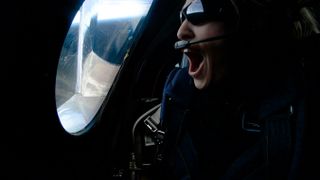
Dylan Taylor is a global entrepreneur, investor and philanthropist who acts as the Chairman and CEO of Voyager Space Holdings and the founder of Space for Humanity , a nonprofit organization that seeks to democratize space exploration. He has also served as an active advocate and philanthropist in the space manufacturing industry and a strategic advisor for the Archmission and the Human Spaceflight Program while also acting as the co-founding patron of the Commercial Spaceflight Federation. He contributed this article to Space.com's Expert Voices: Opinions and Insights .
It's true that 2020 spawned a collective feeling of retreat coupled with a FOMO (fear of missing out) that inspires us to escape a chaotic world. For now, we have the silence of nature or an eventual trip abroad, but the future can provide a more adventurous escape: one to the stars.

The NewSpace industry has its sights set on space tourism , a growing market expected to be worth at least $3 billion by 2030 . As companies like SpaceX test reusable rocket technology to make spaceflight more affordable and accessible for humans, other private firms, including Virgin Galactic and Blue Origin, are investing in suborbital space tourism to take Earthlings into the very edge of space and back. While only uber-wealthy passengers and private researchers will have access to space tourism in the immediate future, the long term holds promises for ordinary citizens.
The evolution of technology plays a vital role in sending more tourists to space and a few influential trends will determine the future of space tourism, along with the progress we make both on and off our home planet.
Related: Space tourists will face big risks, as private companies gear up for paid suborbital flights
Commercial suborbital trips
Suborbital travel will likely be the space tourism subsector to materialize first, but it may also be the most short-lived. However, Blue Origin , backed by Jeff Bezos, is testing its New Shepard system that will launch customers to the edge of space in a capsule which separates from a small rocket and retreats back to Earth under parachutes. Richard Branson's company Virgin Galactic relies on a space plane, dropped from a carrier aircraft, with a rocket motor that speeds up and takes passengers high into the atmosphere.
Both companies' shuttle systems are designed to fly passengers over 50 miles above Earth's atmosphere, allowing customers to experience the feeling of weightlessness for a few minutes. Virgin Galactic's SpaceShipTwo will launch its next human spaceflight test on Dec. 11 as Blue Origin eyes early 2021.
Get the Space.com Newsletter
Breaking space news, the latest updates on rocket launches, skywatching events and more!
These brief spaceflights hold opportunities for tourism and scientific research and present unique experiences for space observation at varying trajectories and regulatory requirements. However, Axios reports concerns over declined public interest in suborbital tourism as a passing interest due to high costs and a short-lived ride. This may deflate the market as passengers await new developments in the field.
But there's some hope. Some experts look to commercial suborbital trips to take the place of long-distance air travel that can eventually cater to everyday citizens. SpaceX plans to use its Starship rocket to fly 100 people around the world in mere minutes. The company stated that a 15-hour flight to Shanghai from New York would be capable of flying in 39 minutes. According to UBS, if even only 5% of the average 150 million passengers that travel on 10 hour or longer flights pay $2,500 per trip, then returns could skyrocket to $20 billion per year in today's value.
A recent UBS report mentions, "Space tourism could be the stepping stone for the development of long-haul travel on earth serviced by space."
Related: Virgin Galactic wants to send people on superfast trips across Earth

Orbital vacations
Orbital tourism, which entails remaining in space for at least one full orbit, is another major focus of governmental agencies and private space companies, all of which have the long-term goal to inhabit the moon and Mars. Projects from Boeing, SpaceX and Axiom Space plan to start launching tourists to the International Space Station on commercial spacecraft beginning as early as this year. SpaceX is also partnering with Space Adventures to send four tourists to low Earth orbit for a few days in late 2021 or early 2022.
As more companies consider in-space tourism, orbital vacations are set to become a popular trend. Orbital vacationing infrastructure, including orbital and lunar-based hotels, is positioned to become lucrative as space infrastructure companies already hauled in a combined $3.6 billion so far this year .
Much of this infrastructure remains in preliminary stages, but the first approach may be to establish low-orbit hotels. One hotel design expects to send guests in a hydrogen-filled balloon with a pressurized capsule, utilizing Earth's gravity. Other options include designing or renovating an existing space station to accommodate guests. NASA, for instance, is opening up the International Space Station for commercial tourism . The Aurora Station , a planned luxury hotel that will host six guests for a $9.5 million, 12-day stay in low Earth orbit, will charge $9.5 million for the trip. It's pricey, but experts predict prices will fall like they did in the tech industry for computers and mobile phones.
A proposal for expandable space habitats may also serve as orbital hotels. Made of unique materials and easily stored at home, they are launched to space where they're inflated to true size. Bigelow Space invented the B330 , a space habitat that enlarges to form a hotel or living area for humans in space. As demand increases, they are interconnected to other inflatable habitats to increase their size. Bigelow also plans to develop an attached inflated module to the International Space Station as one of the first hotels in space. In-space vacations will eventually be the gateway for moon and Mars habitation.
Nurturing the space and world economies
Private space companies are devotedly investing across space tourism and firms like UBS consider access to space an enabler to broader opportunities for investment.
More next-generation engineers will enter the space tourism sector for the scope of opportunities and innovation, eventually decreasing the barriers to entry that will increase competition, lower costs, and ultimately democratize space travel for everyday citizens.
Of course, there are crucial safety, comfort and health factors to consider. Training, medical screenings and liability waivers will need to be examined before tourists head to space.
Space tourism will be a small subsector of the industry, but it will bolster the entire NewSpace industry. Once space tourism does become mainstream, it will also positively impact many socioeconomic factors on Earth: creating jobs, educating citizens about space and fostering a new solar-based energy infrastructure. The sweet escape to the stars can eventually awaken us to the awe-inspiring potential of space exploration while also giving us a better appreciation of home.
Follow us on Twitter @Spacedotcom and on Facebook.
Join our Space Forums to keep talking space on the latest missions, night sky and more! And if you have a news tip, correction or comment, let us know at: [email protected].
SpaceX launching 23 Starlink satellites from Florida this evening
Switzerland signs Artemis Accords to join NASA in moon exploration
James Webb Space Telescope's 'shocking' discovery may hint at hidden exomoon around 'failed star'
Most Popular
- 2 'I really like these suits.' Boeing's snazzy (and flexible) Starliner spacesuits have astronauts buzzing (exclusive)
- 3 Eyes hurt after the eclipse? Signs of retinal damage, explained
- 4 SETI chief says US has no evidence for alien technology. 'And we never have'
- 5 SpaceX launching 23 Starlink satellites from Florida this evening
MIT Technology Review
- Newsletters
The space tourism we were promised is finally here—sort of
SpaceX’s first “all-civilian” mission into orbit could create a whole new service in the space economy. But not everyone will be able to participate.
- Neel V. Patel archive page
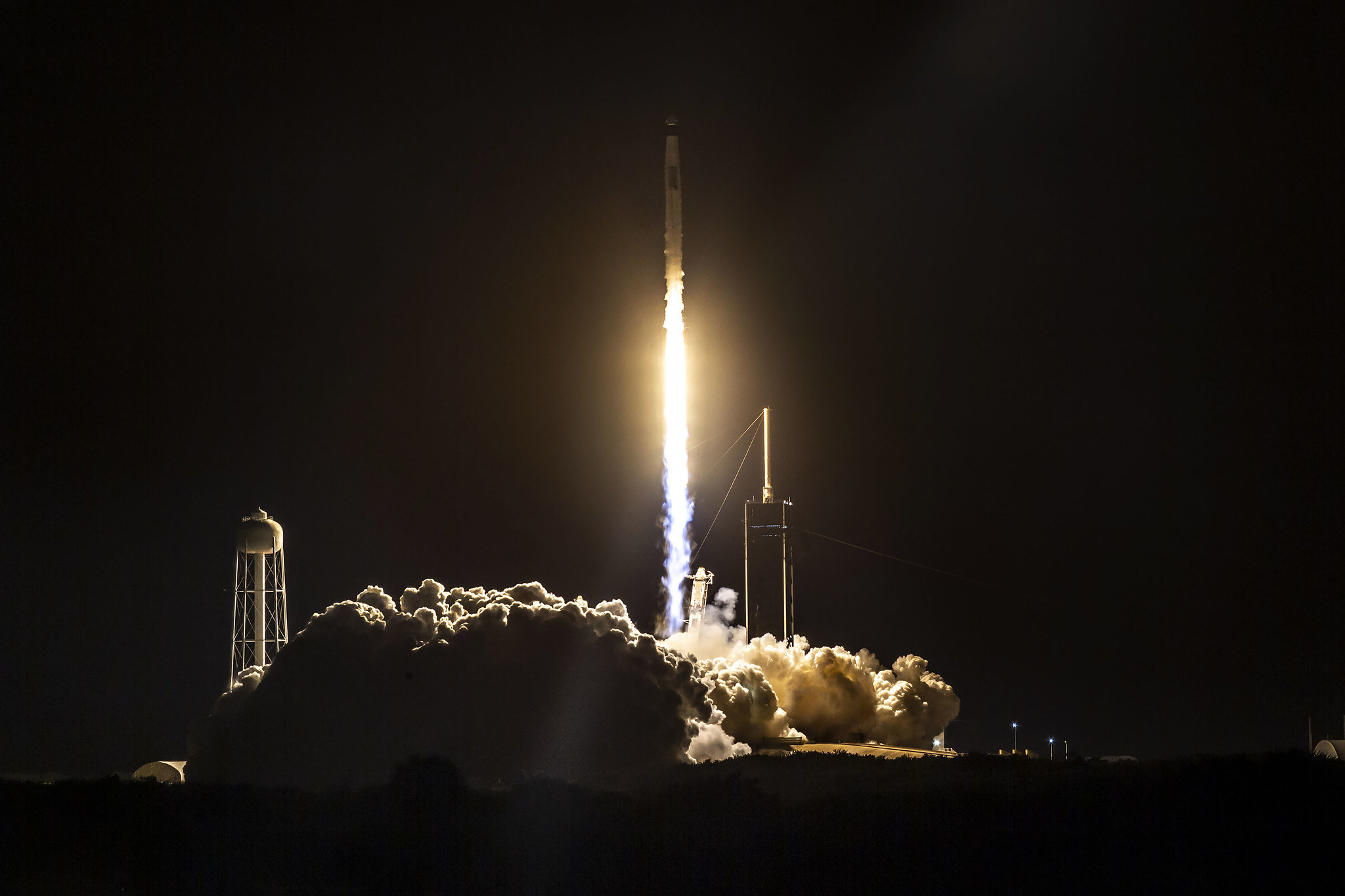
SpaceX weathered through the onset of the covid-19 pandemic last year to become the first private company to launch astronauts into space using a commercial spacecraft.
It’s poised to build on that success with another huge milestone before 2021 is over. On Monday, the company announced plans to launch the first “all-civilian” mission into orbit by the end of the year. Called Inspiration4, the mission will take billionaire Jared Isaacman, a trained pilot and the CEO of digital payments company Shift4Payments, plus three others into low Earth orbit via a Crew Dragon vehicle for two to four days, possibly longer.
Inspiration4 includes a charity element: Isaacman (the sole buyer of the mission and its “commander”) has donated $100 million to St. Jude Children’s Research Hospital, in Memphis, and is attempting to raise at least $100 million more from public donors. One seat is going to a “St. Jude ambassador” that’s already been chosen. But the two others are still up for grabs: one will be raffled off to someone who donates at least $10 to St. Jude, while the other will be a business entrepreneur chosen through a competition held by Shift4Payments.
“This is an important milestone towards enabling access to space for everyone,” SpaceX CEO Elon Musk told reporters on Monday. “It is only through missions like this that we're able to bring the cost down over time and make space accessible to all."
Inspiration4 marks SpaceX’s fourth scheduled private mission in the next few years. The other three include a collaboration with Axiom Space to use Crew Dragon to take four people for an eight-day stay aboard the International Space Station (now scheduled for no earlier than January 2022); another Crew Dragon mission into orbit later that year for four private citizens through tourism company Space Adventures; and Japanese billionaire Yusaku Maezawa’s #dearMoon mission around the moon in 2023 for himself plus seven to 10 others aboard the Starship spacecraft.
SpaceX has never really billed itself as a space tourism company as aggressively as Blue Origin and Virgin Galactic have. While Crew Dragon goes all the way into low-Earth orbit, Virgin Galactic’s SpaceShipTwo and Blue Origin’s New Shepard vehicles just go into suborbital space, offering a taste of microgravity and a view of the Earth from high above for just a few minutes—but for way less money. And yet, in building a business that goes even farther, with higher launch costs and the need for more powerful rockets, SpaceX already has four more private missions on the books than any other company does.
When Crew Dragon first took NASA astronauts into space last year, one of the biggest questions to come up was whether customers outside NASA would actually be interested in going .
“A lot of people believe there is a market for space tourism,” says Howard McCurdy, a space policy expert at American University in Washington, DC. “But right now it’s at the very high end. As transportation capabilities improve, the hope is that the costs will come down. That begs the question of whether or not you can sustain a new space company on space tourism alone. I think that’s questionable.”
So why has SpaceX’s expansion into the private mission scene gone so well so far? Part of it must be that it’s such an attractive brand to partner with at the moment. But even if a market does not materialize soon to make private missions a profitable venture, SpaceX doesn’t need to be concerned. It has plenty of other ways to make money.
“I’m not sure Elon Musk cares much if he makes money through this business,” says McCurdy. “But he’s very good at leveraging and financing his operations.” SpaceX launches satellites for government and commercial customers around the world; it’s got contracts with NASA for taking cargo and astronauts alike to the space station; it’s ramping up progress with building out the Starlink constellation and should start offering internet services to the public some time this year.
“It really reduces your risk when you can have multiple sources of revenue and business for an undertaking that’s based upon the single leap of rockets and space technologies,” says McCurdy. “The market for space tourism is not large enough to sustain a commercial space company. When combined with government contracts, private investments, and foreign sales it starts to become sustainable.”
Space tourism, especially to low-Earth orbit, will still remain incredibly expensive for the foreseeable future. And that underscores the issue of equity. “If we’re going into space, who’s the ‘we’?” asks McCurdy. “Is it just the top 1% of the top 1%?”
The lottery concept addresses this to some extent and offers opportunities to ordinary people, but it won’t be enough on its own. Space tourism, and the rest of the space industry, still needs a sustainable model that can invite more people to participate.
For now, SpaceX appears to be leading the drive to popularize space tourism. And competitors don’t necessarily need to emulate SpaceX’s business model precisely in order to catch up. Robert Goehlich, a German-based space tourism expert at Embry-Riddle Aeronautical University, notes that space tourism itself is already multifaceted, encompassing suborbital flights, orbital flights, space station flights, space hotel flights, and moon flights. The market for one, such as cheaper suborbital flights, is not necessarily faced with the same constraints as the others.
Amplifying space’s potential with quantum
How to safely watch and photograph the total solar eclipse.
The solar eclipse this Monday, April 8, will be visible to millions. Here’s how to make the most of your experience.
- Rhiannon Williams archive page
How scientists are using quantum squeezing to push the limits of their sensors
Fuzziness may rule the quantum realm, but it can be manipulated to our advantage.
- Sophia Chen archive page
The race to fix space-weather forecasting before next big solar storm hits
Solar activity can knock satellites off track, raising the risk of collisions. Scientists are hoping improved atmospheric models will help.
- Tereza Pultarova archive page
Stay connected
Get the latest updates from mit technology review.
Discover special offers, top stories, upcoming events, and more.
Thank you for submitting your email!
It looks like something went wrong.
We’re having trouble saving your preferences. Try refreshing this page and updating them one more time. If you continue to get this message, reach out to us at [email protected] with a list of newsletters you’d like to receive.

The Past, Present, and Future of Space Tourism
It’s been more than 20 years since the first space tourist took flight, but there’s a lot more to come in the emerging industry of space tourism..
- Copy Link copied

Are space vacations in our near future?
Illustration by Delcan & Co.
When Austrian journalist Gerhard Pistor requested to book a trip to the moon in 1964, his travel agency forwarded his query to Pan American World Airways—Pan Am. The now-defunct airline accepted the reservation and noted that the first flights to the moon would take off in the year 2000. So began a years-long space-tourism marketing stunt in which some 93,000 people joined Pan Am’s First Moon Flights Club, a waiting list for the first civilian trips to the moon.
That, of course, never happened. But as the Space Age advanced, space tourism did, too. In 2001, American entrepreneur Dennis Tito became the first true space tourist, launching aboard a Russian Soyuz spacecraft and spending more than a week aboard the International Space Station (ISS)—reportedly spending $20 million to do so.
Today, we’re in a new era of space tourism, with growing numbers of civilians leaving Earth for brief moments through private enterprises focusing on such endeavors. And in the coming decades, we may even see the dawn of regular long-duration space vacations.
The Birth of Space Tourism
After the Apollo era, companies investigated opportunities to send civilians rather than government professionals—that is, NASA astronauts—into space. In the 1970s, manufacturing conglomerate Rockwell International, a contractor for NASA’s Space Shuttle program, researched the possibility of passenger modules that could fit into the payload bay of the Space Shuttle, with similar concepts developed by other companies over the subsequent decade. None came to fruition.
NASA did open up its spaceflights to nongovernment professionals, though, primarily as payload specialists, who were tasked to complete specific in-flight projects by companies outside of NASA. NASA also developed the Teacher in Space and Journalist in Space programs to open up spaceflight to several civilians annually. But the programs were ended after the Challenger disaster in 1986, which killed the first Teacher in Space participant, Christa McAuliffe, along with her six crew members. The program was considered for a revival, but that, too, was ended after a Space Shuttle failure—this one, the fatal Columbia disaster in 2003.
Space tourism finally became successful in 2001 with Tito’s launch to the ISS. That trip was organized by a company called Space Adventures, which ultimately saw eight other space tourists take trips to the ISS through 2009, each launched on a Russian Soyuz spacecraft. But these tourist flights ended after the retirement of NASA’s Space Shuttle program in 2011. Because the only spacecraft capable of human spaceflight at that time was the Soyuz , every seat on every launch was needed for professional astronauts from around the world, and tourism was put on the back burner.
Space Tourism Today
For the past decade, private space tourism companies have been developing spacecraft to take passengers on suborbital flights, which bring them to the edge of space and back down to Earth in relatively short “hops” lasting anywhere from a few minutes to a few hours. By comparison, the first nine Space Adventure clients flew orbital missions that encircled the planet for days.
The method of flight varies by company. Blue Origin , for instance, launches vertically like most rockets, whereas Virgin Galactic flies a rocket-powered space plane that is launched from the belly of a carrier aircraft. While these two companies are the only suborbital companies cleared by the Federal Aviation Administration (FAA) for launches—both have already carried passengers to space—other companies are preparing for liftoff. That includes space-balloon companies Space Perspective and World View , which offer a far more leisurely journey than rocket-powered ascents, gently lifting passengers to high altitudes in a high-tech version of a hot air balloon. Across all suborbital space tourism companies, prices range from approximately $50,000 to $450,000 per seat.
Orbital tourism has also made a comeback, though at far higher prices: tens of millions of dollars per seat. SpaceX , which is contracted by NASA to launch astronauts to the ISS, is also available for private charters. In 2021, entrepreneur Jared Isaacman organized the Inspiration4 mission, the world’s first all-civilian mission, during which he and three crewmates orbited the Earth in a SpaceX Crew Dragon capsule as a fundraiser for St. Jude Children’s Research Hospital. In 2022, SpaceX provided the launch vehicle for the Axiom mission 1 (Ax-1), the world’s first all-civilian mission to the ISS, during which four crew members spent eight days onboard the orbiting research facility.
Space Adventures is also back in business; it organized a flight to the ISS for Japanese entrepreneur Yusaku Maezawa, who traveled to space in December 2021. Maezawa intends to charter SpaceX’s under-development Starship spacecraft for a moon mission called the dearMoon project, taking with him eight civilians on the journey.
What’s Next for Space Tourism
Space tourism remains in its nascent phase, with plenty of work to be done. Existing suborbital companies are still tweaking launch vehicles and increasing launch cadence to approach regularity, while upcoming ones are waiting for FAA approval to begin their operations. And, hopefully, the space tourism companies will eventually be able to reduce the cost of flights, too.
But many enterprises are already eyeing the future when it comes to space tourism—a future in low-Earth orbit (LEO). NASA itself is investing in that future through the Commercial LEO Development Program, through which it is funding the development of private space stations. As NASA and its international partners move toward retiring the ISS in the next decade or so, the agency hopes to rent facilities from private stations that will be able to host not only its professional astronauts but also commercial visitors.
Four projects have received funding from NASA’s Commercial LEO Development Program, including Axiom Space, the company that launched the Ax-1 mission. Axiom has partnered with avant-garde interior designer Philippe Starck to work on its Axiom Station. Another funded project, Starlab by Voyager Space and its subsidiary Nanoracks, has partnered with Hilton to develop astronaut accommodations.
Three of the four companies are expecting to launch their space stations by the end of the decade, but as space programs go, delays are highly likely. (NASA’s current Artemis program, for instance, was hoping to land humans on the moon in 2024, but that deadline has been pushed back to at least 2025.) Still, the future is bright for space tourism and certainly within the realm of reality—all we have to do is wait. And for travelers who have always wished to be among the stars, that wait will be worth it.

Pioneer humanity’s new space age.
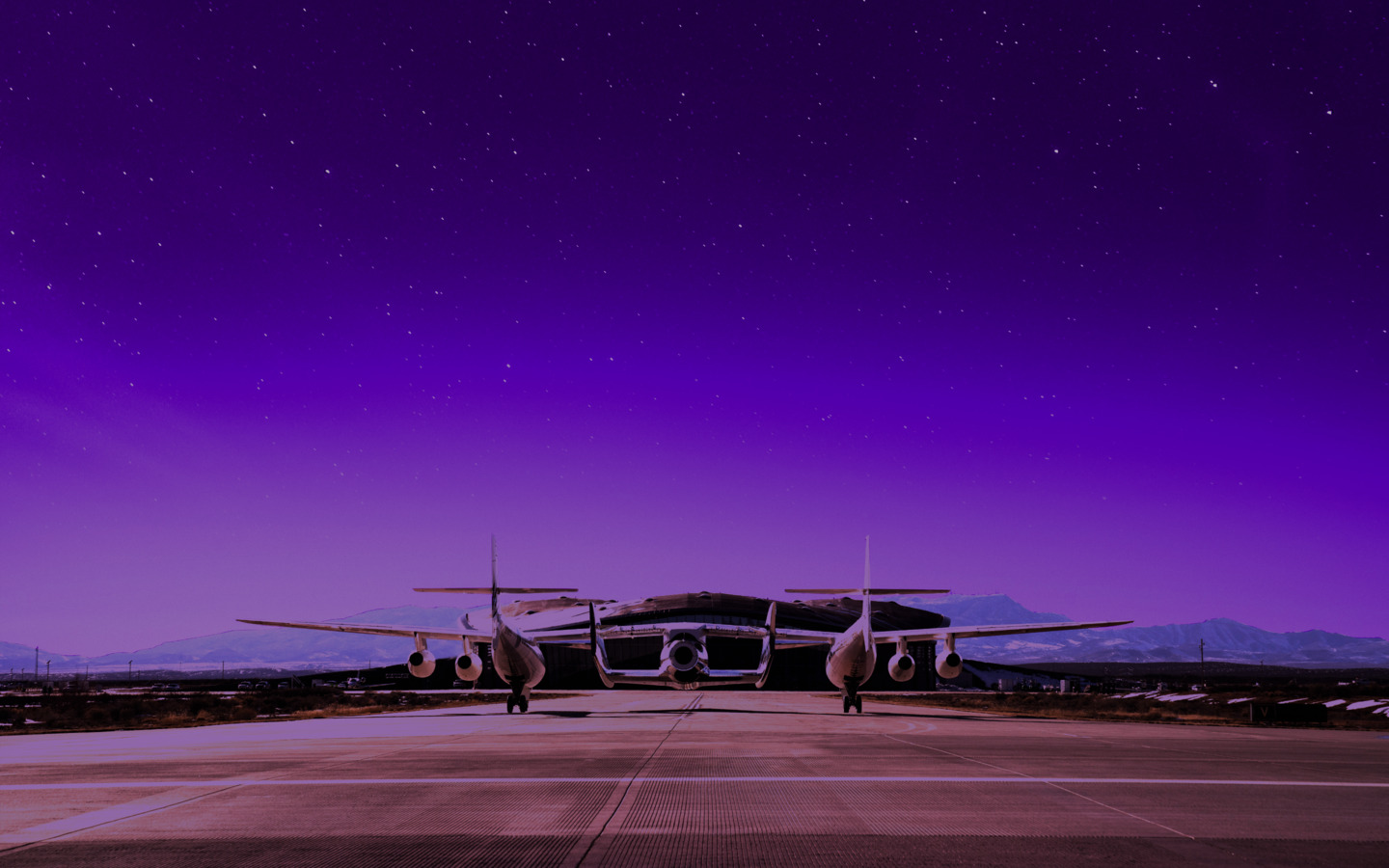
Spaceflight has the unique ability to shift our perspectives, our technology, and even our trajectory as a species.
As the spaceline for Earth, our mission is to transform access to space for the benefit of humankind; to reveal the wonder of space to more people than ever before.
Join us, and help pioneer this exciting new space age for humanity.
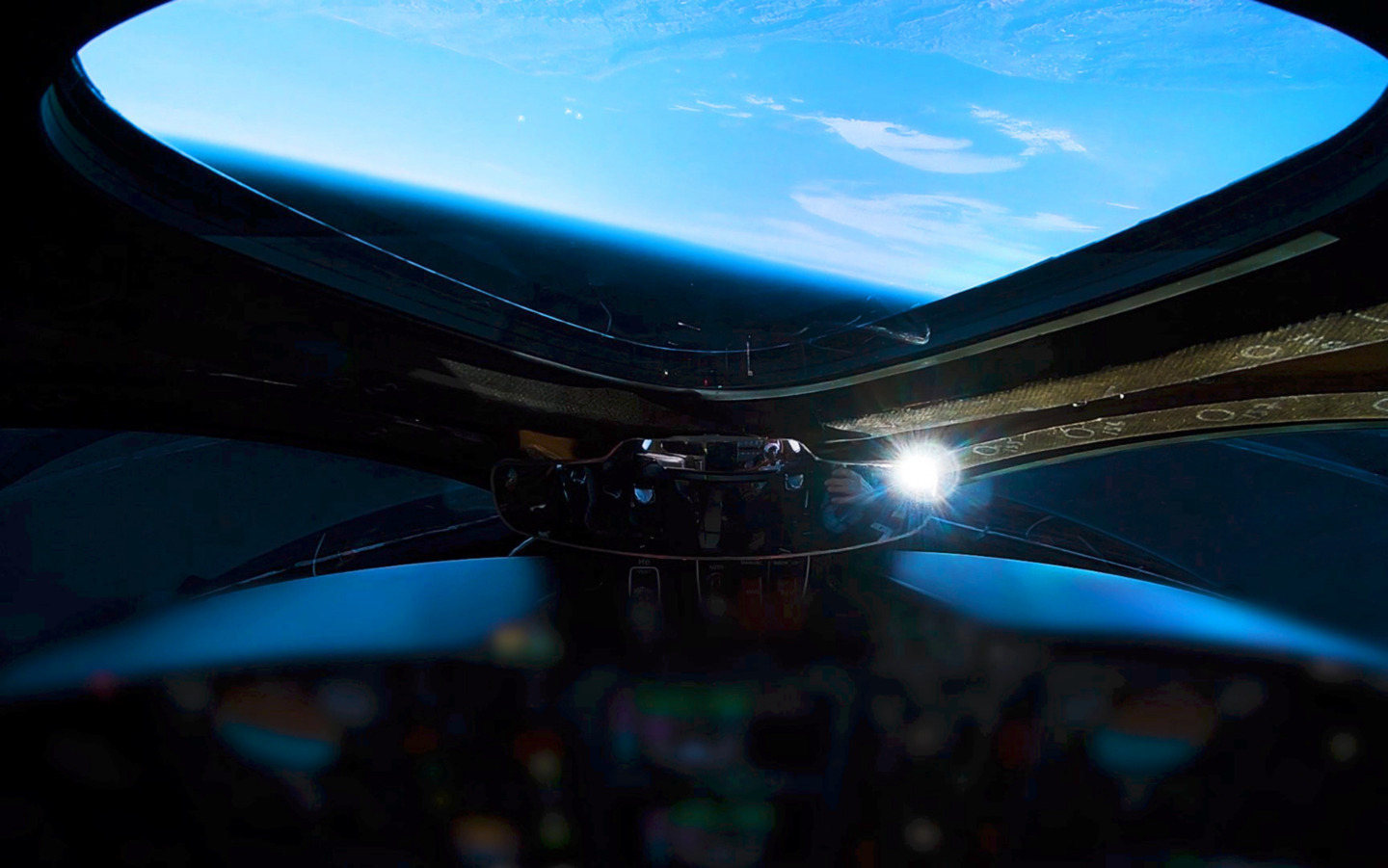
Find your space in history.
Fewer than 700 humans have ever experienced space. As a Virgin Galactic astronaut, your journey marks the dawn of a new space age, where leaving Earth’s atmosphere is an experience no longer reserved solely for professional astronauts.
From the moment you join our global community of pioneering adventurers, to the day you earn your astronaut wings, to the years of telling the greatest story off Earth, your spaceflight can change the world for good.
“Taking more and more passengers out into space will enable them, and us, to look both outwards and back, but with a fresh perspective in both directions.”
How much does space travel cost?
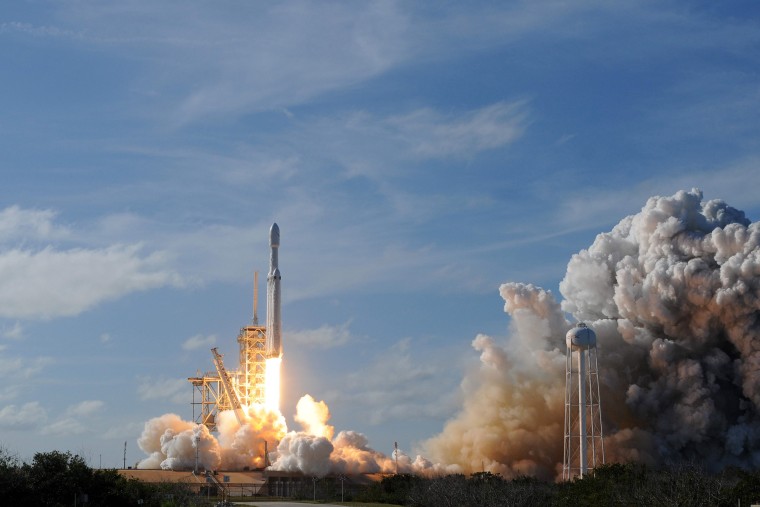
Spaceflight has traditionally been a government-led activity — and it's never been cheap. But the stratospheric cost of putting people and payloads into space is finally starting to fall, thanks in part to the rise of SpaceX and other private spaceflight companies.
Here’s a look at what it costs to go to space, whether it’s another satellite that needs to be placed in orbit or an adventurous billionaire looking for a joyride around the moon .
Sending up a satellite
Using its 230-foot-tall Falcon 9, SpaceX charges $62 million to send into orbit commercial satellites weighing up to 50,000 pounds. The closest American competitor is the United Launch Alliance Atlas V, which starts at $73 million for a 41,000-pound payload .
Science Sign Up for the Daily MACH Newsletter
Those are just starting prices; government agencies typically pay more for a long list of extra services. The Air Force, for example, is paying SpaceX $96.5 million to launch a GPS satellite in 2019 .
Flying to the International Space Station
Since NASA mothballed its space shuttles in 2011, NASA has relied on the Russian Soyuz spacecraft to get astronauts to the ISS. Russia has been steadily raising the price of Soyuz seats, reaching $82 million each in 2015. The agency last purchased Soyuz seats for $75 million apiece in 2017.
NASA hopes to end its reliance on Russia in 2019, when SpaceX's Crew Dragon and Boeing's Starliner capsules begin “taxi” flights to the ISS. Seats on those spacecraft are expected to cost about $58 million .
How much would I have to pay for a flight into space?
Depending on where you're going, a ticket could set you back anywhere from $250,000 to tens of millions of dollars.
If you're looking simply to cross the 62-mile-high Karman line that marks the boundary between the upper atmosphere and outer space, Virgin Galactic says it will take you there for $250,000. The company says about 650 people already have tickets for the suborbital flights, to be made aboard a winged vehicle called SpaceShipTwo. A date for customer flights has yet to be announced.
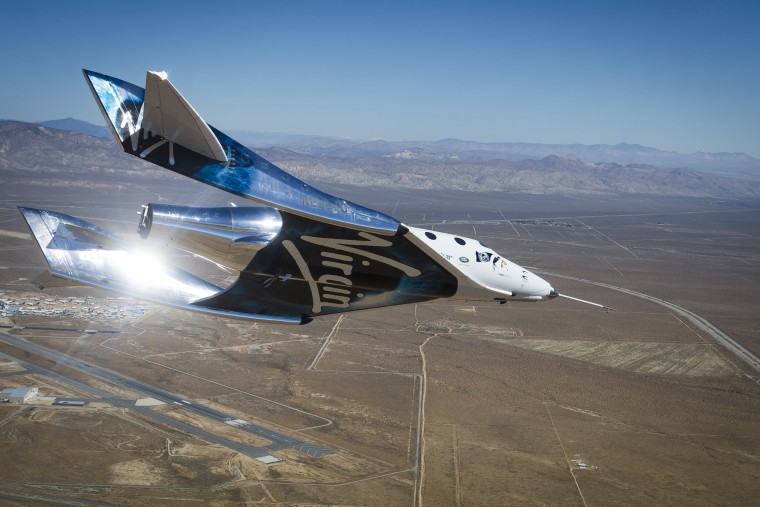
Jeff Bezos’ rocket company, Blue Origin, plans something similar — sending space tourists on brief suborbital flights using its New Shepard rocket system. The company has yet to set ticket prices or say when paid flights might begin.
Virgin Galactic and Blue Origin passengers will join the fewer than a dozen private citizens who have funded their own trips into space. From 2001 to 2009, the Vienna, Virginia-based firm Space Adventures worked with Russia’s space agency to send eight people to the ISS on flights lasting 10 or more days.

Space A colossal elevator to space could be going up sooner than you ever imagined
The world's first private astronaut, a wealthy American engineer named Dennis Tito, reportedly paid $20 million to spend eight days in space in 2001. More recently, Guy Laliberté, the co-founder of Cirque du Soleil, shelled out $35 million for an ISS trip in 2009 . Space Adventures still advertises Soyuz flights and plans to start booking trips to the ISS aboard Boeing’s Starliner.
In September 2018, SpaceX CEO Elon Musk announced that Japanese billionaire Yusaku Maezawa would ride the company’s yet-to-be-built Big Falcon Rocket on a trip around the moon. Neither Musk nor Maezawa, who said he would take along seven artists, would discuss the mission’s cost.
What about other rockets?
Small satellites may qualify for a free ride to space through NASA’s Educational Launch of Nanosatellites program, which helps universities and research groups fly standardized satellites called CubeSats aboard rockets as secondary payloads.
If your satellite can’t hitch a free ride, you can book a NASA sounding rocket to the edge of space for as little as $1 million . For orbital flights of payloads weighing less than 500 pounds, Los Angeles-based Rocket Lab offers launches of its Electron rocket from New Zealand for about $5 million .
From there, the price goes up steeply. Northrop Grumman's Pegasus rocket, which is air-launched from the belly of a jumbo jet, can place 1,000 pounds in orbit for about $40 million . Stratolaunch, a new venture bankrolled by Microsoft co-founder Paul Allen, plans to launch Pegasus rockets from its own colossal airplane before offering an expanded line of rockets capable of carrying up to 13,000 pounds. The company has yet to disclose prices.
NASA is developing its Space Launch System, which will carry astronauts to the moon and Mars. The rocket’s per-launch cost has not been disclosed, but the agency now spends at least $2 billion per year on the project. The maiden flight isn’t expected until 2020.
WANT MORE STORIES ABOUT SPACE TRAVEL?
- NASA solar probe to go where no spacecraft has gone before
- Space shuttle relic to be resurrected as deep-space habitat
- The animals that paved the way for humans in space
FOLLOW NBC NEWS MACH ON TWITTER , FACEBOOK , AND INSTAGRAM .
Space is booming. Here's how to embrace the $1.8 trillion opportunity

Space technologies could revolutionize the global economy. Image: Unsplash/NASA
.chakra .wef-1c7l3mo{-webkit-transition:all 0.15s ease-out;transition:all 0.15s ease-out;cursor:pointer;-webkit-text-decoration:none;text-decoration:none;outline:none;color:inherit;}.chakra .wef-1c7l3mo:hover,.chakra .wef-1c7l3mo[data-hover]{-webkit-text-decoration:underline;text-decoration:underline;}.chakra .wef-1c7l3mo:focus,.chakra .wef-1c7l3mo[data-focus]{box-shadow:0 0 0 3px rgba(168,203,251,0.5);} Nikolai Khlystov
Gayle markovitz.

.chakra .wef-1nk5u5d{margin-top:16px;margin-bottom:16px;line-height:1.388;color:#2846F8;font-size:1.25rem;}@media screen and (min-width:56.5rem){.chakra .wef-1nk5u5d{font-size:1.125rem;}} Get involved .chakra .wef-9dduvl{margin-top:16px;margin-bottom:16px;line-height:1.388;font-size:1.25rem;}@media screen and (min-width:56.5rem){.chakra .wef-9dduvl{font-size:1.125rem;}} with our crowdsourced digital platform to deliver impact at scale
Stay up to date:, emerging technologies.
- The space economy is expected to reach $1.8 trillion by 2035 as space-enabled technologies advance.
- A new report, Space: The $1.8 Trillion Opportunity for Global Economic Growth , outlines key developments in the space economy.
- The space economy not only opens up commercial opportunities, but also promises to help tackle some of the world's greatest challenges such as climate change.
Space is approaching a new frontier. The space economy is expected to be worth $1.8 trillion by 2035 as satellite and rocket-enabled technologies become increasingly prevalent, according to a new report.
Already, space-enabled technologies drive everything from weather forecasts to the increasingly ubiquitous smart gadgets such as smart watchs. Yet space technologies are also delivering benefits to a wider range of stakeholders, with industries such as retail, consumer goods and lifestyle; food and beverages; supply chains and transport; and disaster mitigation all set to benefit from space innovations.
“Space technologies are delivering greater value to a more diverse set of stakeholders than ever before,” said Sebastian Buckup, Member of the Executive Committee, World Economic Forum. “As costs reduce and accessibility rises, these technologies could reshape whole industries, and have as much impact on business and society as smartphones or cloud computing.”
A new report from the World Economic Forum, Space: The $1.8 Trillion Opportunity for Global Economic Growth , developed in collaboration with McKinsey & Company, outlines key developments that will shape space and adjacent industries throughout the next decade.
The report brings together experts from across space and other industries to provide the most detailed picture yet of both space technology’s future trajectory and how it will impact other sectors, often indirectly, through rapidly improving and expanding technological capabilities.
Here’s what to know about the future of space until 2035.
1. Space will be a larger part of the global economy
By 2035, the space economy is set to reach $1.8 trillion, up from $630 billion in 2023 and averaging a growth rate of 9% per annum – a figure significantly above the growth rate of global GDP. Space-based and/or enabled technologies such communications; positioning, navigation and timing; and Earth observation services are expected to be the key drivers of this growth.
2. Space's impact will increasingly go beyond space itself
The share of the total space economy captured by traditional hardware and service providers will slowly decrease to the benefit of other services such as ride hailing apps, whose products rely on space-enabled technology such as satellites.
3. Space will become more about connecting people and goods
Five sectors – supply chain and transport; food and beverage; state-sponsored defence; retail, consumer and lifestyle; and digital communications – are forecast to generate 60% of the global space economy by 2035, although others will also benefit.
4. Space’s return on investment will be more than financial
Space will play an increasingly vital role in mitigating world challenges, ranging from disaster warning and climate monitoring, to improved humanitarian response and more widespread prosperity.
Expansion of the space economy
A decrease in launch costs and ongoing commercial innovation means more can be done in space than ever before.
The number of satellites launched per year, for example, has grown at a rate of 50%, while launch costs have fallen 10-fold over the last 20 years – with lower costs enabling more launches. The price of data, which is key to connectivity, has also dropped – a trend that is set to continue broadly across different sectors. Moreover, as mega-rocket technology becomes ubiquitous by the early-mid 30s, more opportunities will open for what can be placed in orbit and at what price.
In addition, a broader set of investors – including state and non-state actors – are investing in space, with investments reaching all-times highs of more than $70 billion invested in 2021 and 2022.
Meanwhile, applications like space tourism are no longer in the realms of science fiction. The market is expected to be capped at around $4-6 billion to 2035, with most revenues coming from in-orbit stays aboard space stations by ultra-high-net-worth individuals.
"The key enabler for the advancement of civilization is synergy between a supportive space policy framework, pioneering business models and the development of a vibrant space economy," said Michael Suffredini, CEO of Axiom Space. "The future of space is not just about the destinations we build but about the economic ecosystems we create along the way."
The report also notes that the reach of space technology is only going to increase by 2035 and could revolutionize the global economy. Supply chain and transport will benefit from more efficient and cost-effective logistics, for example, while food and beverage will see better efficiency in last-mile delivery of perishable goods.
Moreover, the report predicts that adjacent industries such as agriculture, information technology, insurance and construction all stand to benefit from the multi-billion dollar revenue, cost efficiencies and environmental benefits offered by space-enabled technologies.
“For decades, Earth observation (EO) satellites were a critical, but narrowly used tool," said Agnieszka Lukaszczyk, VP Government Affairs, EMEA, Planet Labs. "Now, the cloud computing, data and AI revolutions are enabling EO data to be routinely used in countless day-to-day decisions, in areas ranging from agriculture to ESG reporting.”
How space can change the world
Space has the potential to help the world solve some of its greatest challenges ranging from the impacts of the climate crisis to economic disparity.
Space technology, for example, already plays a vital role in disaster warning and management. This is expected to increase multifold with improved monitoring of climate disasters, increased access to resilient communication networks and optimized tracking through satellite positioning data.
Space technology can also support efforts to mitigate climate change through innovations like the monitoring of methane leaks from ageing industrial infrastructure, among other uses.
There will be socioeconomic benefits, too. Space is set to play a pivotal role in addressing inequality by improving access to education and economic activity, through bridging digital divides, widening access to education and healthcare, and enabling precise monitoring of agriculture, natural resources and environmental changes.
Embracing the potential of space
Looking to the future, the report notes that every sector can be a driver of the space economy.
“Businesses in a growing variety of sectors – such as agriculture, construction, insurance, climate change mitigation – can and will all be drivers of the new and expanding space economy,” said Ryan Brukardt, Senior Partner, McKinsey & Company. “By understanding and embracing the full potential of space, public and private industry players can position themselves as leaders in the space economy, unlocking long-term benefits.”
While the report forecasts the global space economy to reach $1.8 trillion by 2035, an upside estimate of $2.3 trillion could be in play based on improved access to data and reduced costs of space entry.
Conversely, if there is stalled access to space and significant Earth-based technological advancements, instead of those in space, the report forecasts a downside estimate of $1.4 trillion.
Either way, by understanding and embracing the potential for space, public and private players alike will be well placed to help unlock its myriad of potential applications – for the benefit of everyone.
Don't miss any update on this topic
Create a free account and access your personalized content collection with our latest publications and analyses.
License and Republishing
World Economic Forum articles may be republished in accordance with the Creative Commons Attribution-NonCommercial-NoDerivatives 4.0 International Public License, and in accordance with our Terms of Use.
The views expressed in this article are those of the author alone and not the World Economic Forum.
The Agenda .chakra .wef-n7bacu{margin-top:16px;margin-bottom:16px;line-height:1.388;font-weight:400;} Weekly
A weekly update of the most important issues driving the global agenda

.chakra .wef-1dtnjt5{display:-webkit-box;display:-webkit-flex;display:-ms-flexbox;display:flex;-webkit-align-items:center;-webkit-box-align:center;-ms-flex-align:center;align-items:center;-webkit-flex-wrap:wrap;-ms-flex-wrap:wrap;flex-wrap:wrap;} More on Emerging Technologies .chakra .wef-17xejub{-webkit-flex:1;-ms-flex:1;flex:1;justify-self:stretch;-webkit-align-self:stretch;-ms-flex-item-align:stretch;align-self:stretch;} .chakra .wef-nr1rr4{display:-webkit-inline-box;display:-webkit-inline-flex;display:-ms-inline-flexbox;display:inline-flex;white-space:normal;vertical-align:middle;text-transform:uppercase;font-size:0.75rem;border-radius:0.25rem;font-weight:700;-webkit-align-items:center;-webkit-box-align:center;-ms-flex-align:center;align-items:center;line-height:1.2;-webkit-letter-spacing:1.25px;-moz-letter-spacing:1.25px;-ms-letter-spacing:1.25px;letter-spacing:1.25px;background:none;padding:0px;color:#B3B3B3;-webkit-box-decoration-break:clone;box-decoration-break:clone;-webkit-box-decoration-break:clone;}@media screen and (min-width:37.5rem){.chakra .wef-nr1rr4{font-size:0.875rem;}}@media screen and (min-width:56.5rem){.chakra .wef-nr1rr4{font-size:1rem;}} See all

South Korean nuclear fusion reactor sets new record, and other technology news you need to know
Sebastian Buckup
April 19, 2024

How to build the skills needed for the age of AI
Juliana Guaqueta Ospina
April 11, 2024

These 6 countries are using space technology to build their digital capabilities. Here’s how
Simon Torkington
April 8, 2024

What is e-voting? Who’s using it and is it safe?
Victoria Masterson
April 4, 2024

This Dubai-based company turns used cooking oil into biofuels

4 lessons from Jane Goodall as the renowned primatologist turns 90
Gareth Francis
April 3, 2024
share this!
April 16, 2024
This article has been reviewed according to Science X's editorial process and policies . Editors have highlighted the following attributes while ensuring the content's credibility:
fact-checked
trusted source
written by researcher(s)
Space exploration: A luxury or a necessity?
by Daniel Fillion, The Conversation
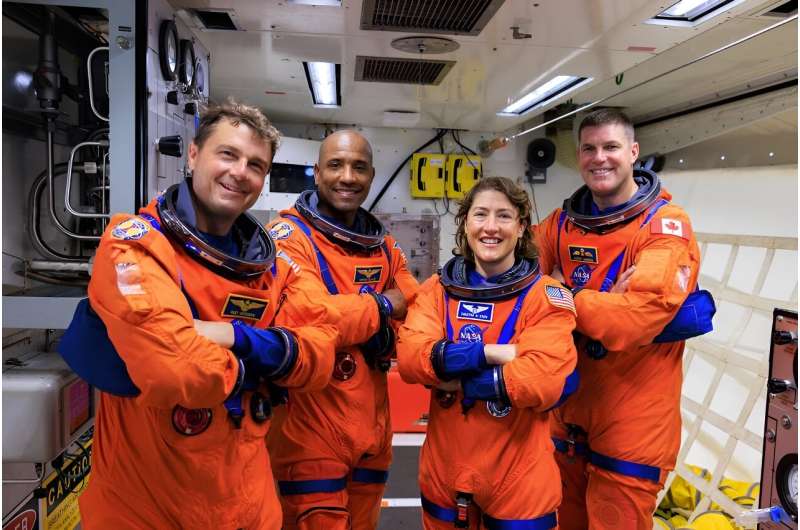
"Oh, come on Daniel, space travel is so expensive, and pointless!" These were the words of my friend Max, during a Christmas party where I was discussing my thesis project: studying places on Earth where the living conditions are so extreme, they could hold lessons for future space missions.
This disdainful attitude toward space research is actually quite common.
Space exploration is currently booming. Just think of the Artemis missions, SpaceX's ambitious plans for Mars, the deployment of the James Webb telescope or the recent "race to the moon."
A number of large-scale projects are getting the green light now, mainly from NASA, including the Artemis II mission that will carry four astronauts to the moon, which will have Canadian astronaut Jeremy Hansen aboard . This will be a first since 1972. Incredibly, it's been 50 years since the last human mission to Earth's natural satellite.
Although many people find space exploration inspiring, others are skeptical and even angered by what they see as an unjustifiable waste of resources and money on an activity that only spreads pollution to another place. This sums up the feelings of my friend Max.
In this article, I will try to prove him wrong.
Humans are explorers first
My great curiosity has led me to travel to extreme places so I can study them . But I am not the only one with this desire to explore.
In my Grade 9 history class, my teacher stood on top of her desk and, with a grave and serious tone, went on to act out Jacques Cartier's arrival in North America in her own, colorful style. A few years earlier, I had learned about how the first humans left their caves to climb mountains. One hundred and thirty years ago, humans sailed further and further south until they saw the glacial landscapes of Antarctica for the first time . At the same time, humans were attempting to dominate the skies and aiming for the beyond with planes and rockets—which is how we got to the moon.
What is the common denominator in our history? Exploration, of course.
Human nature is characterized by a propensity to travel, to look further and to discover. We are all curious by nature. If we stop wanting to explore, we stop being human.
The Earth has rings
So, my friend Max, let me invite you outside. It's a beautiful, starry night with no moon. It's a bit cold, but at least the atmosphere isn't too humid, which makes the sky more transparent. We can see stars flickering. Some are blue, others are red. And the more our eyes adapt, the more the sky reveals its secrets.
Suddenly, something else stands out. It's another light, but it's not flashing, and it's moving quite quickly. A shooting star? No, the atmosphere would have burned it up in a few seconds .
It's a satellite, one of thousands that orbit the Earth like rings. These satellites are a direct consequence of space exploration. We would be living in a completely different world without them.
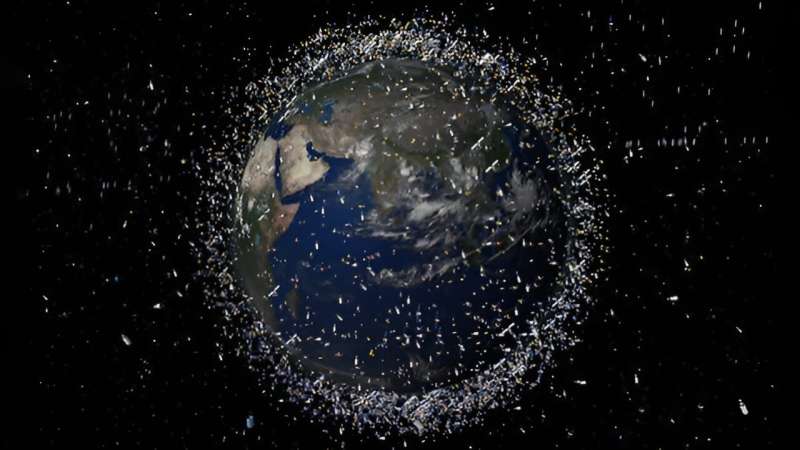
Indeed, not an hour goes by in our lives when we don't use a satellite .
On the one hand, you would likely have gotten lost on your way here, Max, because there would have been no GPS to show you which exit to take. And secondly, I wouldn't have been able to help you find your way because there would be no wifi. We can push our thinking even further; agriculture, environmental monitoring, communications, the weather, even banks, all of these depend on satellites.
But how does this work? You have to understand that these satellites move so quickly they actually circle the Earth several times a day. Combined with a very large workforce, they provide a complete view of the globe. From the middle of the oceans to the highest mountains and the almost inaccessible poles, we have eyes everywhere. By drawing on this vast quantity of observations, we obtain data on changes to the earth's surface, the spread of forest fires, the movement of winds, the melting of ice and many other things, while enabling global communication and credit card transactions .
Space exploration was the trigger that enabled us to develop and operate these technologies. And it doesn't stop there.
Two birds, one stone
The practice of medicine in remote areas also benefits from space exploration. It's not easy for communities in remote areas to access health care, especially since hospitals don't always have the sophisticated equipment they need.
If you think about it, when astronauts explore space, they become a small population in a very, very remote region. It's true. What happens if someone has a really bad stomach ache? Or breaks an arm? They don't have time to come back home for treatment, so we have to react, and quickly.
Scientific research in telemedicine has developed to address this important issue, producing a number of innovative technologies. And if these are useful for astronauts, why not use them for rural populations, too?
A few years ago, three Québec researchers from different universities were working on a tiny probe that could rapidly analyze and diagnose a blood sample .
Although some prototypes are not yet on the market, others are already in widespread use, such as the ultrasound scanner designed by NASA . This scanner takes precise photos of organs and bones that can be transmitted to a doctor, who will then have crucial information on hand to recommend treatments.
In a way, space exploration provides us with opportunities to respond to urgent needs on Earth. So, Max, are you beginning to see the need for it?
Another perspective
Finally, I have to admit that I find it rather encouraging to see Russians, Americans, Japanese, Canadians and Europeans living together on the Space Station. Not so long ago, some of these countries were attacking each other with nuclear bombs. In space, no such borders exist.
Exploration brings people together. It opens our eyes to new perspectives. It shows us that we're all in the same boat together. That's pretty important, don't you think, Max?
Our planet is magnificent and unique, an oasis of impossible life. But it is fragile. We need to protect it. That's why exploring beyond the Earth should not be considered a luxury; it's an investment in our shared humanity.
So, Max, when Jeremy Hansen and his crew take off in 2025, will you be there to watch them?
Provided by The Conversation
Explore further
Feedback to editors

European XFEL elicits secrets from an important nanogel
9 hours ago

Chemists introduce new copper-catalyzed C-H activation strategy

Scientists discover new way to extract cosmological information from galaxy surveys
10 hours ago

Compact quantum light processing: New findings lead to advances in optical quantum computing

Some plant-based steaks and cold cuts are lacking in protein, researchers find

Merging nuclear physics experiments and astronomical observations to advance equation-of-state research

Which countries are more at risk in the global supply chain?

The Italian central Apennines are a source of CO₂, study finds

Dramatic burning of royal remains reveals Maya regime change
11 hours ago

Accelerating the discovery of new materials via the ion-exchange method
Relevant physicsforums posts, solar activity and space weather update thread, our beautiful universe - photos and videos, will we ever communicate with extraterrestial life in a reasonable time frame.
23 hours ago
Orientation of the Earth, Sun and Solar System in the Milky Way
Apr 18, 2024
The linear polarization and brightness of pulsars
Recommendations for international research competitions.
More from Astronomy and Astrophysics
Related Stories

Through astronaut eyes, virtual reality propels gateway forward
Apr 10, 2024

What delays to the Artemis II and III missions mean for Canada
Jan 15, 2024

To the moon and back: NASA's Artemis II crew rehearses splashdown
Feb 29, 2024

NASA astronauts test SpaceX elevator concept for Artemis lunar lander
Dec 21, 2023

Artemis launch brings us closer to space exploration goals
Aug 26, 2022

NASA is looking for commercial Mars missions. Do people still want to go to Mars?
Feb 5, 2024
Recommended for you

'Tube map' around planets and moons made possible by knot theory
Apr 17, 2024

NASA's Ingenuity Mars helicopter team says goodbye—for now

NASA confirms mystery object that crashed through roof of Florida home came from space station
Apr 16, 2024

NASA is seeking a faster, cheaper way to bring Mars samples to Earth

NASA unveils probe bound for Jupiter's possibly life-sustaining moon
Apr 12, 2024

A new type of seismic sensor to detect moonquakes
Let us know if there is a problem with our content.
Use this form if you have come across a typo, inaccuracy or would like to send an edit request for the content on this page. For general inquiries, please use our contact form . For general feedback, use the public comments section below (please adhere to guidelines ).
Please select the most appropriate category to facilitate processing of your request
Thank you for taking time to provide your feedback to the editors.
Your feedback is important to us. However, we do not guarantee individual replies due to the high volume of messages.
E-mail the story
Your email address is used only to let the recipient know who sent the email. Neither your address nor the recipient's address will be used for any other purpose. The information you enter will appear in your e-mail message and is not retained by Phys.org in any form.
Newsletter sign up
Get weekly and/or daily updates delivered to your inbox. You can unsubscribe at any time and we'll never share your details to third parties.
More information Privacy policy
Donate and enjoy an ad-free experience
We keep our content available to everyone. Consider supporting Science X's mission by getting a premium account.
E-mail newsletter
We couldn’t find any results matching your search.
Please try using other words for your search or explore other sections of the website for relevant information.
We’re sorry, we are currently experiencing some issues, please try again later.
Our team is working diligently to resolve the issue. Thank you for your patience and understanding.
News & Insights

A Sneak Peak Into the Finances of Elon Musk’s SpaceX

April 19, 2024 — 03:09 pm EDT
Written by Heather Altamirano for GOBankingRates ->
In 2002, Elon Musk launched SpaceX — a groundbreaking company designed to reduce the cost of space travel, create commercial spaceflight, and develop a sustainable colony on Mars. Since its inception, SpaceX has been a progressive force in the aerospace industry and continues to be known for innovative advancements such as Starlink , the development of the Falcon 9 rocket — a reusable rocket which has greatly reduced the price tag of space launches — and is the only private company to have returned a spacecraft from low-Earth orbit.
Check Out: If You Bought $1K of Elon Musk’s Favorite Crypto 5 Years Ago, Here’s How Much You Would Have Now Read Next: 6 Genius Things All Wealthy People Do With Their Money
While SpaceX maintains ambitious goals and impressive historic breakthroughs, not much is always known about the company’s finances . The Wall Street Journal , however, previously reviewed financial documents that give a rare look into the secretive SpaceX’s revenue and here’s what we know.
Some Investors Don’t Know the Losses or Gains of the Company
According to the WSJ, not everyone who has invested in SpaceX knows the losses or profits of the company. “Some people with stakes in SpaceX have no idea how much money the company makes or loses. Many SpaceX investors view their holdings as a long-term bet and say they aren’t concerned about seeing results.”
Learn More: I’m a Self-Made Millionaire — 5 Stocks You Shouldn’t Sell
SpaceX Earned a Profit in 2023
For the first quarter of 2023, the WSJ reported that the company” generated $55 million in profit on $1.5 billion in revenue.” The article stated, “The slim earnings came after two years of significant but narrowing losses at SpaceX, which is pouring money into a rocket that remains unproven and poses difficult technical challenges.”
Closing out 2023, The Motley Fool (via Yahoo! Finance) indicated that SpaceX “probably nearly doubled its revenue to $8.7 billion in 2023, and generated ‘significant’ profits.” However, The Motley Fool’s source — Payload — did not provide a firm number, though The Motley Fool reported Bloomberg as indicating “late last year [2023] that profits were on track to reach $3 billion, ‘adjusted’ to exclude one-time items.”
SpaceX Lost Millions in 2022
According to the documents the WSJ reviewed: “The company reported about $5.2 billion in total expenses for 2022, up from $3.3 billion the year earlier, the documents show. Revenue doubled to $4.6 billion, helping the company reduce its loss last year to $559 million from $968 million.”
The Company Spent Billions in 2021
SpaceX spends a significant amount of money on research and property. “During 2021 and last year, the company spent a total of $5.4 billion on purchases of property and equipment and incurred significant research and development costs,” according to the WSJ. “Some portion of that spending is tied to its program developing Starship, a powerful rocket that poses immense hurdles for SpaceX. Costs for Starship weren’t specified in the documents.”
Other Ways SpaceX Spends Money
In addition to research and development, The WSJ reported SpaceX “spent $153 million to buy SpaceX shares” earlier in 2023, “during one of its liquidity events, where current and former employees can potentially cash out their stock in the company.” The article also stated: “SpaceX also said it paid $524 million, mostly in stock, in a rare deal to acquire a satellite-communications company called Swarm Technologies in 2021.”
More From GOBankingRates
- Make Yourself Money Smart: 20 ChatGPT Prompts To Increase Your Wealth
- 8 Home Items To Avoid Buying at Dollar Tree This Spring
- 16 Best Places To Retire in the US That Feel Like Europe
- 3 Things You Must Do When Your Savings Reach $50,000
This article originally appeared on GOBankingRates.com : A Sneak Peak Into the Finances of Elon Musk’s SpaceX
The views and opinions expressed herein are the views and opinions of the author and do not necessarily reflect those of Nasdaq, Inc.

More Related Articles
This data feed is not available at this time.
Sign up for the TradeTalks newsletter to receive your weekly dose of trading news, trends and education. Delivered Wednesdays.
To add symbols:
- Type a symbol or company name. When the symbol you want to add appears, add it to My Quotes by selecting it and pressing Enter/Return.
- Copy and paste multiple symbols separated by spaces.
These symbols will be available throughout the site during your session.
Your symbols have been updated
Edit watchlist.
- Type a symbol or company name. When the symbol you want to add appears, add it to Watchlist by selecting it and pressing Enter/Return.
Opt in to Smart Portfolio
Smart Portfolio is supported by our partner TipRanks. By connecting my portfolio to TipRanks Smart Portfolio I agree to their Terms of Use .

Suggested Searches
- Climate Change
- Expedition 64
- Mars perseverance
- SpaceX Crew-2
- International Space Station
- View All Topics A-Z
Humans in Space
Earth & climate, the solar system, the universe, aeronautics, learning resources, news & events.

Join NASA in Celebrating Earth Day 2024 by Sharing a #GlobalSelfie

NASA Selects New Aircraft-Driven Studies of Earth and Climate Change

The Ocean Touches Everything: Celebrate Earth Day with NASA
- Search All NASA Missions
- A to Z List of Missions
- Upcoming Launches and Landings
- Spaceships and Rockets
- Communicating with Missions
- James Webb Space Telescope
- Hubble Space Telescope
- Why Go to Space
- Astronauts Home
- Commercial Space
- Destinations
- Living in Space
- Explore Earth Science
- Earth, Our Planet
- Earth Science in Action
- Earth Multimedia
- Earth Science Researchers
- Pluto & Dwarf Planets
- Asteroids, Comets & Meteors
- The Kuiper Belt
- The Oort Cloud
- Skywatching
- The Search for Life in the Universe
- Black Holes
- The Big Bang
- Dark Energy & Dark Matter
- Earth Science
- Planetary Science
- Astrophysics & Space Science
- The Sun & Heliophysics
- Biological & Physical Sciences
- Lunar Science
- Citizen Science
- Astromaterials
- Aeronautics Research
- Human Space Travel Research
- Science in the Air
- NASA Aircraft
- Flight Innovation
- Supersonic Flight
- Air Traffic Solutions
- Green Aviation Tech
- Drones & You
- Technology Transfer & Spinoffs
- Space Travel Technology
- Technology Living in Space
- Manufacturing and Materials
- Science Instruments
- For Kids and Students
- For Educators
- For Colleges and Universities
- For Professionals
- Science for Everyone
- Requests for Exhibits, Artifacts, or Speakers
- STEM Engagement at NASA
- NASA's Impacts
- Centers and Facilities
- Directorates
- Organizations
- People of NASA
- Internships
- Our History
- Doing Business with NASA
- Get Involved
- Aeronáutica
- Ciencias Terrestres
- Sistema Solar
- All NASA News
- Video Series on NASA+
- Newsletters
- Social Media
- Media Resources
- Upcoming Launches & Landings
- Virtual Events
- Sounds and Ringtones
- Interactives
- STEM Multimedia

Work Underway on Large Cargo Landers for NASA’s Artemis Moon Missions

Mars Science Laboratory: Curiosity Rover

NASA Open Science Initiative Expands OpenET Across Amazon Basin

NASA Motion Sickness Study Volunteers Needed!

Students Celebrate Rockets, Environment at NASA’s Kennedy Space Center

AI for Earth: How NASA’s Artificial Intelligence and Open Science Efforts Combat Climate Change

Sols 4159-4160: A Fully Loaded First Sol

NASA’s Juno Gives Aerial Views of Mountain, Lava Lake on Io

Hubble Captures a Bright Galactic and Stellar Duo

NASA’s TESS Returns to Science Operations

Astronauts To Patch Up NASA’s NICER Telescope

Hubble Goes Hunting for Small Main Belt Asteroids

NASA’s Near Space Network Enables PACE Climate Mission to ‘Phone Home’

NASA Photographer Honored for Thrilling Inverted In-Flight Image

NASA Langley Team to Study Weather During Eclipse Using Uncrewed Vehicles

ARMD Solicitations

Amendment 10: B.9 Heliophysics Low-Cost Access to Space Final Text and Proposal Due Date.

Tech Today: Taking Earth’s Pulse with NASA Satellites
Earth Day 2024: Posters and Virtual Backgrounds

NASA Names Finalists of the Power to Explore Challenge

Diez maneras en que los estudiantes pueden prepararse para ser astronautas

Astronauta de la NASA Marcos Berríos

Resultados científicos revolucionarios en la estación espacial de 2023
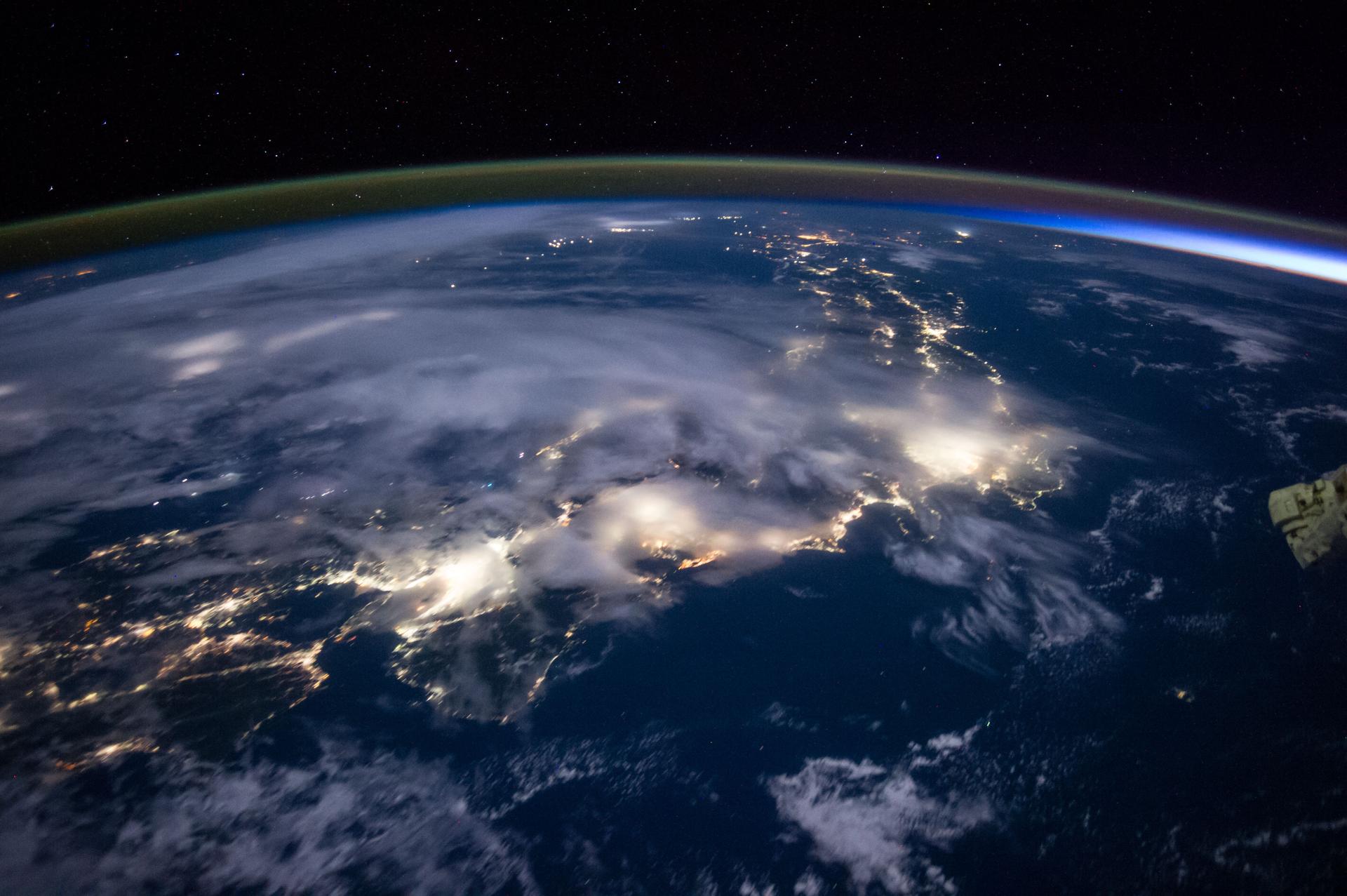
NASA’s Space Sustainability Strategy
NASA is a proactive leader for responsible and sustainable space operations, marked by the development of widely adopted best practices, analytic studies, models, technologies, and operations for the benefit of all.
Introduction
A Burgeoning Space Environment
The space operating environment is undergoing rapid changes with the emergence of new commercial capabilities that NASA has championed, including increased satellite activity and novel space capabilities such as satellite constellations, autonomous spacecraft, and commercial space destinations. Understanding the associated risks and benefits of new and existing capabilities is crucial for space sustainability.
Under the leadership of a cross-agency advisory board, NASA has committed to develop an integrated agencywide strategy to measure and assess space sustainability for Earth, Earth orbit, the cislunar space, and deep space. NASA will identify the most cost-effective ways to meet our sustainability targets, incentivize adoption of sustainable practices through technology and policy development, and increase our efforts to share and receive information with the rest of the global space community.
Space Sustainability Documents

NASA’s Space Sustainability Strategy, Volume 1: Earth Orbit
Volume 1 of NASA’s Space Sustainability Strategy focuses on advancing the agency's responsibilities in space sustainability in Earth Orbit, aligned with its mission to innovate, explore, and inspire humanity.

Cost and Benefit Analysis of Orbital Debris Remediation
The Office of Technology, Policy, and Strategy report, “Cost and Benefit Analysis of Orbital Debris Remediation,” considers several remediation approaches to reducing the risks posed by orbital debris, including moving, removing, or reusing it. Some remediation approaches could create more benefits than costs in under a decade, the report found.
New NASA Strategy Envisions Sustainable Future for Space Operations
To address a rapidly changing space operating environment and ensure its preservation for generations to come, NASA released the first part of its integrated Space Sustainability Strategy, on Tuesday advancing the agency’s role as a global leader on this crucial issue.
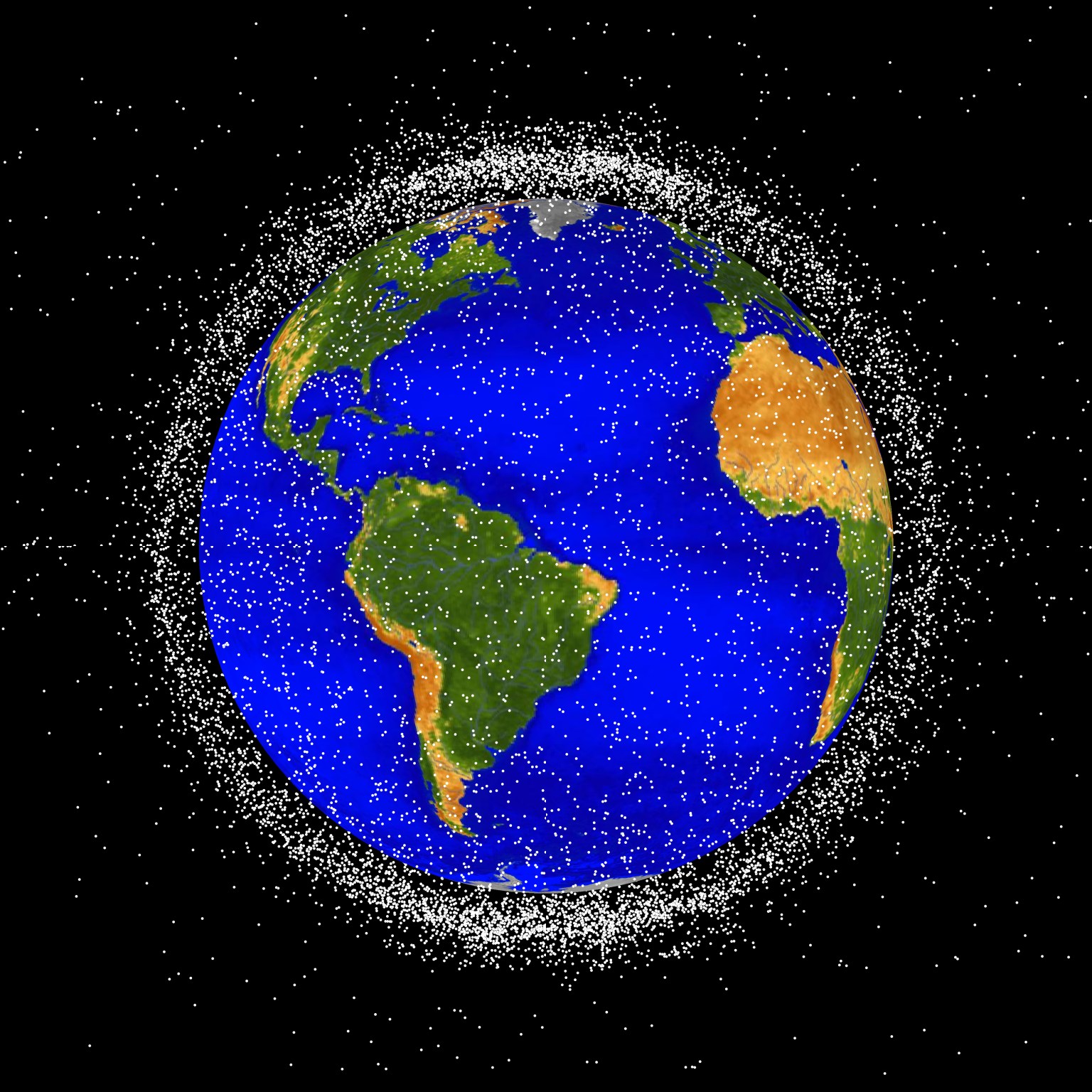
Responsible Exploration: Preserving the Cosmos
The aerospace ecosystem is undergoing rapid changes with the emergence of new capabilities, many of which NASA has championed. Today, NASA is unveiling the agency’s unified and comprehensive strategy to support the long-term sustainability of the space environment and continue its longstanding proactive leadership of preserving the cosmos.
Engage with Us
NASA’s Office of Technology, Policy, and Strategy is soliciting research and analysis related to the social, economic, and policy aspects of orbital space and lunar surface sustainability.

- International edition
- Australia edition
- Europe edition

Iran missile and drone attack on Israel – what we know so far
Israel’s military has reported minor damage after Iran launched dozens of drones and missiles towards it late on Saturday
- Iran attack on Israel – live updates
- Full report: Iran launches drones and cruise missiles against Israel
Iran launched hundreds of drones as well as cruise missiles towards Israel , in the Islamic Republic’s first ever direct attack on the Jewish state, in response to the 1 April strike on an Iranian diplomatic building in the Syrian capital, Damascus, which killed a senior figure in Iran’s Islamic Revolutionary Guards and eight other officers.
Benny Gantz, a member of the war cabinet, said that Israel will exact a price from Iran in response to its mass missile and drone attack when the time is right. His comments came ahead of a war cabinet meeting alongside Israel’s prime minister, Benjamin Netanyahu, and the country’s defence minister, Yoav Gallant.
Tehran has warned it will strike again with greater force if Israel or the US retaliate for the Iranian strike on Israel by more 300 drones and missiles on Saturday night. The air raids , the Islamic Republic’s first ever direct attack on the Israeli state, brought a years-long shadow war into the open and threatened to draw the region into a broader conflagration as Israel said it was considering its response.
However, the attack, mostly launched from inside Iran, caused only modest damage in Israel as most were shot down with the help of the US, Britain and Jordan. An air force base in southern Israel was hit, but continued to operate as normal and a seven-year-old child was seriously hurt by shrapnel. There were no other reports of serious damage. Israeli military spokesperson Rear Adm Daniel Hagari said that 99% of the launches had been intercepted.
Most of the Iranian drones flying over Syria’s airspace during Tehran’s strikes overnight were downed by Israeli and US jets before reaching their targets in Israel, two western intelligence sources told Reuters .
The UN security council will hold an emergency meeting on Sunday at the request of Israel’s ambassador to the UN, the council’s president said in a statement.
Iran informed Turkey in advance of its planned operation against Israel, a Turkish diplomatic source has told Reuters . The source also said that the US conveyed to Iran via Ankara that its operation must be “within certain limits”. These reports come after Iran’s foreign minister, Hossein Amirabdollahian , said in a meeting with foreign ambassadors in Tehran that Iran had informed the US that its attacks against Israel will be “limited” and for self-defence only.
John Kirby, the White House’s top national security spokesperson, told ABC’s This Week programme on Sunday that the US will continue to help Israel defend itself, but does not want war with Iran. “We don’t seek escalated tensions in the region. We don’t seek a wider conflict,” Kirby said. News outlet Axios reported that Joe Biden , the US president, had told Netanyahu that he would oppose an Israeli counterattack against Iran and that the prime minister should “take the win”.
UK Royal Air Force fighter jets and refuelling aircraft were also involved in Israel’s defence, taking off from bases in Cyprus. Their role, according to the UK Ministry of Defence, was to fill in for the US air force in the sorties against Islamic State normally carried out over Iraq and north-eastern Syria, but also to intercept Iranian drones if they came into the UK area of operations.
World leaders have condemned Iran’s attack, with regional powers including Saudi Arabia and Egypt calling for restraint. The UN secretary general, António Guterres, said: “I am deeply alarmed about the very real danger of a devastating region-wide escalation. I urge all parties to exercise maximum restraint to avoid any action that could lead to major military confrontations on multiple fronts in the Middle East.”

Jordan’s prime minister, Bisher Khasawneh , warned that any escalation in the region would lead to “dangerous paths”, joining a chorus of condemnation from world leaders to the attack. Other countries including the UK, Spain, the US, Egypt, Saudi Arabia and China, have called for restraint amid fears of a regional escalation of conflict across the Middle East. Iran’s foreign ministry has summoned the ambassadors of the UK , France , and Germany to question what it referred to as their “irresponsible stance” regarding Tehran’s retaliatory strikes on Israel, the semi-official Iranian Labour news agency reported .
Major airlines across the Middle East, including Emirates Airlines and Qatar Airways , announced they would resume some of their operations in the region after cancelling or rerouting some flights in response to Iran’s attack on Israel. Israel said it had reopened its airspace as of 7:30am local time on Sunday morning, with Beirut airport also reopening this morning. Several Iranian airports, including Tehran’s Imam Khomeini International, however, have cancelled flights until Monday.
- Middle East and north Africa
- US military
Most viewed

IMAGES
VIDEO
COMMENTS
Evolution of Spaceflight Costs and Technologies. During the space race, the cost of sending something into space averaged between $6,000 to over $25,000 per kg of weight not adjusted for inflation and NASA spent $28 billion to land astronauts on the moon, about $288 billion in today's dollars. In recent decades, it has averaged around $10,000 ...
As space tourism became a real thing, dozens of companies entered this industry hoping to capitalize on renewed public interest in space, including Blue Origin in 2000 and Virgin Galactic in 2004. In the 2000s, space tourists were limited to launches aboard Russian Soyuz aircraft and only could go to the ISS.
Each spot on Virgin's suborbital spaceplane, the cheapest way to space at the moment, will set somebody back $450,000. A single seat on Blue Origin's initial suborbital launch sold at auction ...
It's rumoured that Blue Origin could ask $500,000, though prices aren't yet known. The same goes for Virgin Galactic, which plans to begin private flights to space during 2022. It charged ...
The reservation required a $500 deposit; the flight itself will cost $50,000 and last six to 12 hours. ... Sales in the space tourism space, Mr. Curran acknowledges, "are reasonably difficult to ...
Oct. 13, 2021. Blue Origin has declined to publicly state a price for a ticket to fly on New Shepard. The company is nearing $100 million in sales so far, Mr. Bezos has said. But it's unclear ...
Space Perspective: "Hot Air Balloon" to Stratosphere. Price: $125,000. Flight altitude: 30 kilometers. What you'll get: A relaxing six-hour ride to the stratosphere in a balloon-borne ...
It marks a new era in space tourism for the company, with monthly flights expected to follow. Space tourism is a growing industry for the rich. Seats on a Virgin Galactic flight cost $450,000 each.
What does this cost? Unsurprisingly, going to space comes with a hefty price tag. ... Congress agreed in 2004 to largely let the space-tourism industry self-regulate, ...
These trips will be costly, at $55 million for the flight and a stay on the International Space Station. The high cost has led some to warn that space tourism - and private access to space more ...
The space tourism tickets will cost a total of $450,000 for the 90-minute flight, including an initial $150,000 deposit, and will be available for purchase on Virgin Galactic's website. The ...
The era of space tourism has dawned. ... It'll also cost each person as much as $1,500 per day for things like clothing, hygiene products, office supplies, and sleeping bags.
So far, tickets to the edge of space go for six figures—$200,000 or more—while booking an orbital expedition costs up to eight figures. A $200,000 price tag for a brief spaceflight tops the ...
Space tourism is officially taking flight, and it might just save the Earth. ... These short trips are anticipated to cost between $250,000 and $500,000, but in January 2022, expect to see a truly ...
Space tourism has finally become a reality and although the ticket to ride is still at a premium for most, the cost of booking a galactic getaway is gradually falling as companies find new and ...
The NewSpace industry has its sights set on space tourism, a growing market expected to be worth at least $3 billion by 2030. ... lower costs, and ultimately democratize space travel for everyday ...
A complete guide to soon-to-come space tourism packages offered by Virgin Galactic, Blue Origin, NASA and SpaceX. ... The total cost of the trip would be around $50 million per person, the agency ...
The space tourism we were promised is finally here—sort of. SpaceX's first "all-civilian" mission into orbit could create a whole new service in the space economy. But not everyone will be ...
That includes space-balloon companies Space Perspective and World View, which offer a far more leisurely journey than rocket-powered ascents, gently lifting passengers to high altitudes in a high-tech version of a hot air balloon. Across all suborbital space tourism companies, prices range from approximately $50,000 to $450,000 per seat.
Fewer than 700 humans have ever experienced space. As a Virgin Galactic astronaut, your journey marks the dawn of a new space age, where leaving Earth's atmosphere is an experience no longer reserved solely for professional astronauts. From the moment you join our global community of pioneering adventurers, to the day you earn your astronaut ...
These are the four people launching on SpaceX's first ISS space tourism mission. Food alone costs $2,000 per day, per person, in space. Getting provisions to and from the space station for a ...
The company has yet to disclose prices. NASA is developing its Space Launch System, which will carry astronauts to the moon and Mars. The rocket's per-launch cost has not been disclosed, but the ...
During the last 60 years, roughly 600 people have flown into space, and the vast majority of them have been government astronauts. For a suborbital trip on Virgin Galactic's SpaceShipTwo and Blue Origin's New Shepard, seats typically cost $250,000 to $500,000. Flights beyond that to actual orbit—a much higher altitude—are far more ...
1. Space will be a larger part of the global economy. By 2035, the space economy is set to reach $1.8 trillion, up from $630 billion in 2023 and averaging a growth rate of 9% per annum - a figure significantly above the growth rate of global GDP. Space-based and/or enabled technologies such communications; positioning, navigation and timing ...
This photo provided by NASA shows, from left to right, Reid Wiseman, Victor Glover, Christina Koch and CSA (Canadian Space Agency) astronaut Jeremy Hansen during a test at the Kennedy Space Center ...
In 2002, Elon Musk launched SpaceX — a groundbreaking company designed to reduce the cost of space travel, create commercial spaceflight, and develop a sustainable colony on Mars. Since its ...
Under the leadership of a cross-agency advisory board, NASA has committed to develop an integrated agencywide strategy to measure and assess space sustainability for Earth, Earth orbit, the cislunar space, and deep space. NASA will identify the most cost-effective ways to meet our sustainability targets, incentivize adoption of sustainable ...
Here are some of the top ways Americans may be able to reduce the overall cost of a trip, according to travel experts. 1. Be flexible with trip timing and location. Being flexible with your plans ...
Most of the more than 300 Iranian munitions, the majority of which are believed to have been launched from inside of Iran's territory during a five-hour attack, were intercepted before they got ...
Israel's military has reported minor damage after Iran launched dozens of drones and missiles towards it late on Saturday Iran launched hundreds of drones as well as cruise missiles towards ...